In the 1990's, the model was discovered by noted automobilia collector Sam Sandifer in a yard sale in Wixom, Michigan, with absolutely no other concrete information about its history. It was thought it may possibly have come from Ford and the Wixom location may have indicated a possible Lincoln connection.
Clues as to the model's origins came from several unique design elements in the model itself, with two design structures of particular interest: The Chevron-shaped taillights were integrated with the rear bumper, and the canopy was a pillarless design. Hopefully, those two features would provide all the necessary identifying marks to pinpoint who the original designer may have been. Below is a more recent photo that better represents the mystery model.
Alex Tremulis was one of the most influential automotive stylists and was head of Ford's Advanced Styling Studio for several years in the mid-1950's. He kept a large archive of his work throughout his life, including many of the design concepts that were developed at Ford. Part of his responsibilities was to train new employees and art students in the many aspects of automobile design. It was thought that a new designer learning the trade could exercise his imagination unhindered and if he was to mess up, it would be better to do it in the Advanced Styling Studio rather than in production where mistakes could be very costly. In all, Tremulis mentored over 140 future designers and he maintained a significant file of many of their incredible design studies. If the mystery car came from Ford during Tremulis' tenure, there was a good chance it would be found in his files.
In 1955, Alex Tremulis prepared a speech to be given to Henry Ford (II) during his tour of the Advanced Styling Studio. Along with the script of the speech, he had maintained the photographs of dozens of concept renderings that accompanied his tour. Also included were numerous photos of the students who came through the studio. The complete tour and photos can be found HERE. One particular photo contained a drawing that incorporated both the Chevron taillights and the pillarless greenhouse. The top center drawing had all the hallmarks of the mystery car! To add even more possibility that it was the original sketch for the mystery car is that it is directly above a drawing done by a young Jim Powers of his 1955 Palomar concept. The Palomar also had a pillarless canopy and was also chosen to be modeled in 3/8ths scale, so the sketch was displayed in the right place and in very good company.
But how could the model in Tremulis' studio escape the camera with all the photos taken at the time? Well, it didn't. It's been there the entire time waiting to be discovered, just not as a featured model. Several other 3/8ths scale model concepts took top billing in the Advanced Styling Studio, namely the futuristic "La Tosca" and its companion, the proposed 200 mile per hour 1956 Thunderbird "Mexico". Both concepts wore the Thunderbird badge, Ford's most sporty vehicle in direct competition with GM's Corvette. La Tosca even made it to the cover of Car Life in 1955 and was also featured in LIFE magazine. Shown below are two photos of the La Tosca and the Mexico models in what looks like candid shots taken during the formal photoshoot by LIFE magazine.
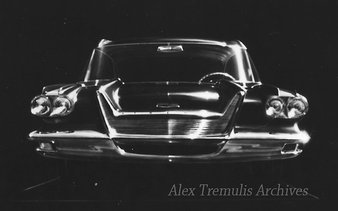 Lincoln sketch with the model's front end treatment
Lincoln sketch with the model's front end treatment Further research suggests there may well have been a connection of the model to John Najjar's Lincoln studio. The sketch at left bears a striking resemblance to the model and is badged "LINCOLN" across its front trim. This sketch was also displayed in Tremulis' Advanced Styling Studio. It is well known that La Tosca was ordered over to Lincoln shortly after Tremulis' antics with the radio controlled model. As told, Tremulis would sometimes drive La Tosca across Oakwood Blvd to the training grounds. On one such occasion, its batteries were running low and held up traffic, including an unamused Ford executive, Earle MacPherson. It was just a short while later that Tremulis would be relieved of the model. So it wouldn't be too much of a stretch if the mystery model joined La Tosca in its departure from Advanced Styling and travelled over to the Lincoln studio (but probably not under its own power). In any case, the Lincoln sketch incorporating the mystery model's front end treatment indicates that the model was at some point associated with Lincoln.
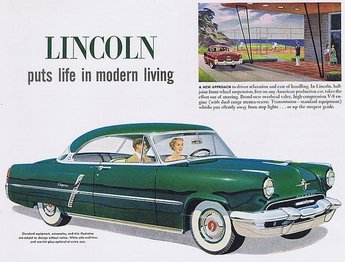
So who was the original designer of the drawing in Tremulis' studio? Thankfully, the original photos are 8x10 glossies from which the signature or the artist can be identified. The original 3/8ths scale rendering was signed by Wm. Crabtree and photographed in December, 1955. But Crabtree is not a marquee name when it comes to notable Ford concept cars of the 1950's... Yet.
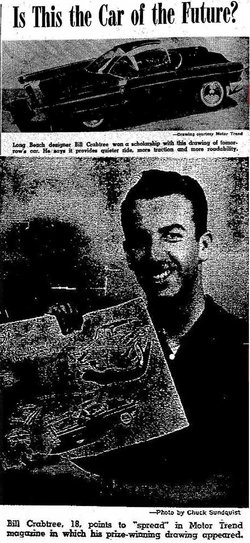
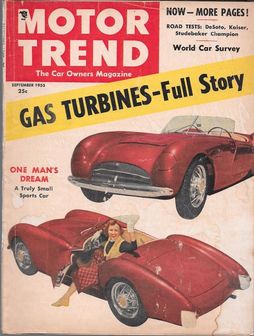
So Crabtree and Thompson must have been classmates at Art Center as they learned the tools of their new trade. A search of photos from the Art Center archives brings up this gem, where indeed Bill Crabtree is at the far right of the photo beside his classmate McKinley Thompson, along with the great Art Center instructor and master at clay modeling, Joe Thompson (center).
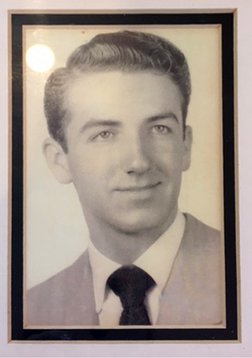 Bill Crabtree, 1953
Bill Crabtree, 1953 So now the new search begins for how Bill Crabtree's career within Ford progressed and which other designs and projects he may have contributed to. And once again, just as it was 62 years ago, Bill Crabtree's automotive styling talent and contributions to design are just beginning to get recognized!
A special thanks to Sam Sandifer, Marty Martino and especially to Sue Crabtree for sharing her husband's life story. And, of course, to Bill Crabtree for creating such beautiful artwork reflecting his passion for automobiles and the fascinating mystery that surrounds all great design.
Thanks to the archives of Art Center College of Design, Ford Motor Company, and the Alex Tremulis Archives.

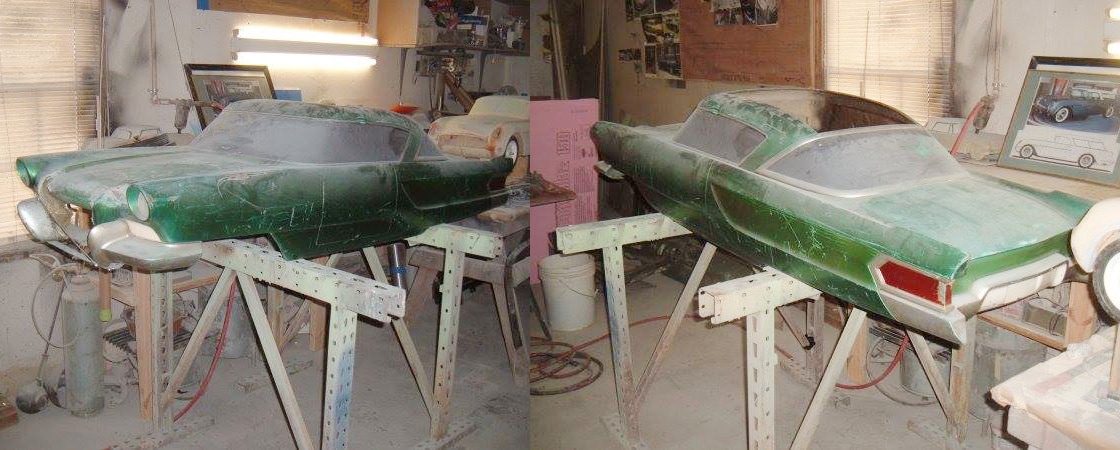

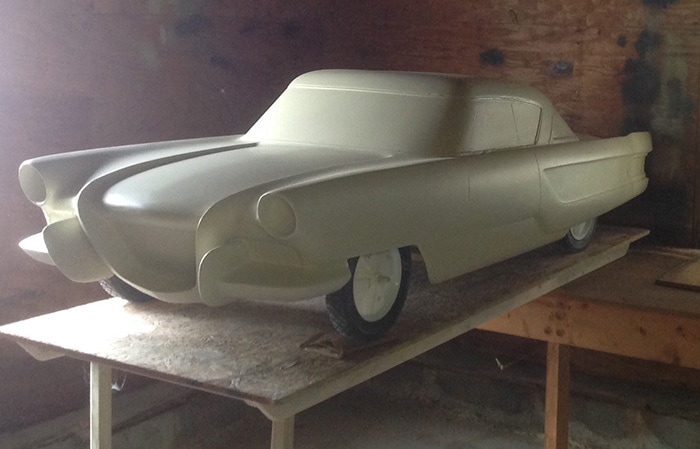
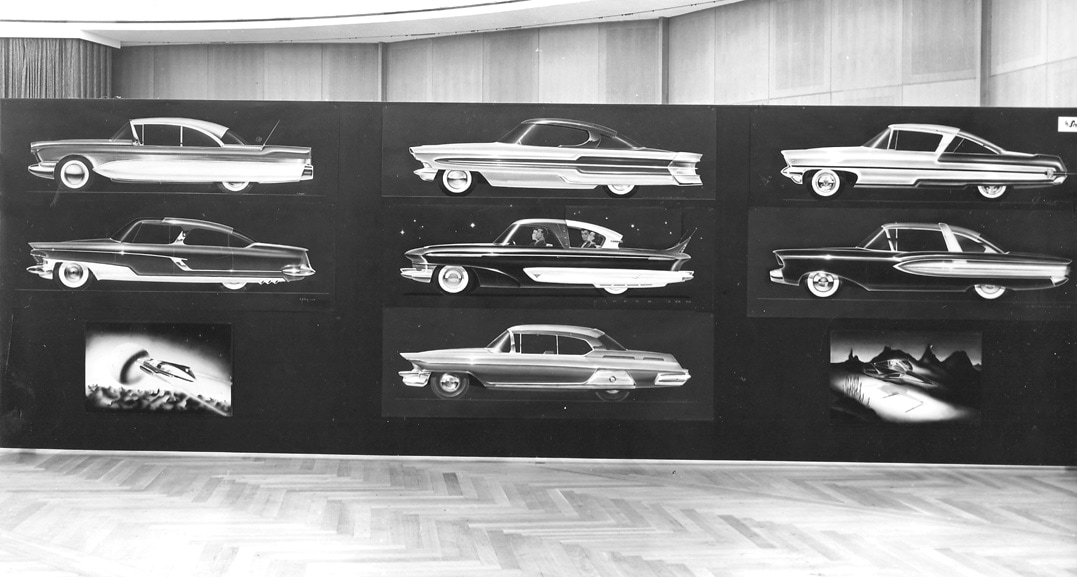
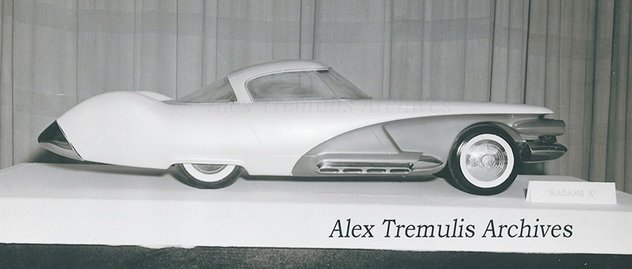
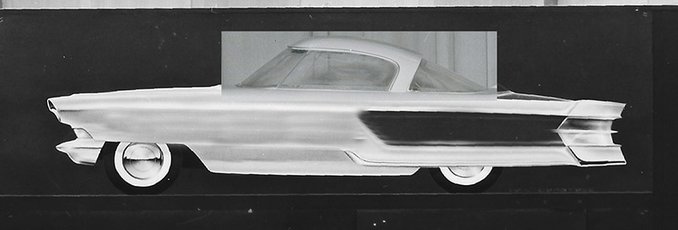

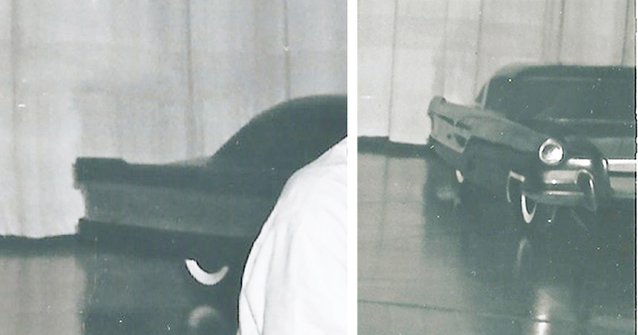
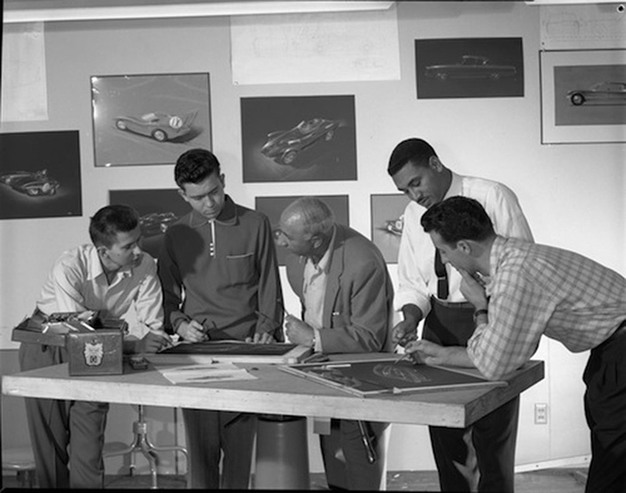
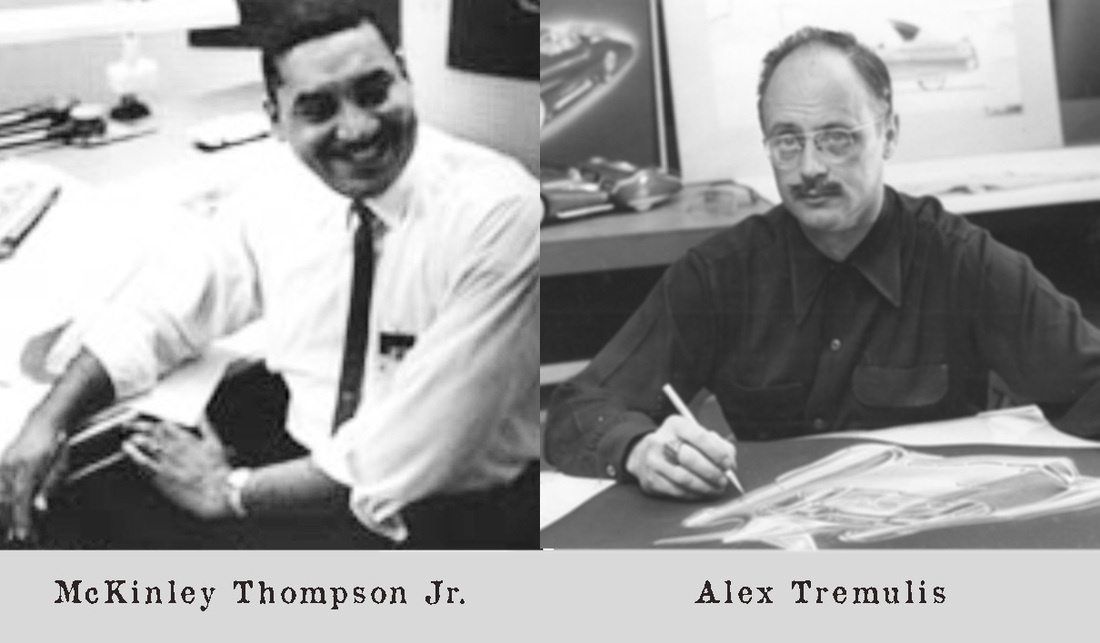
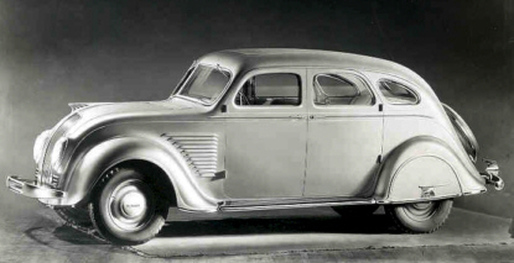
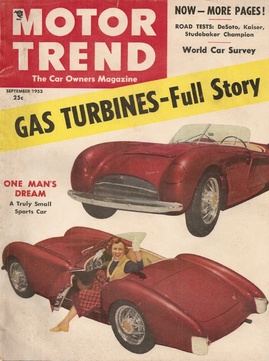
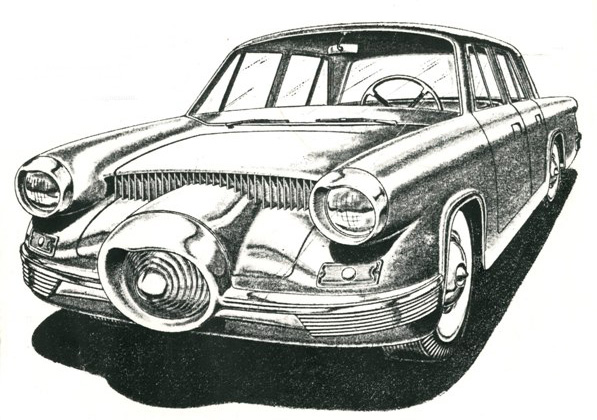
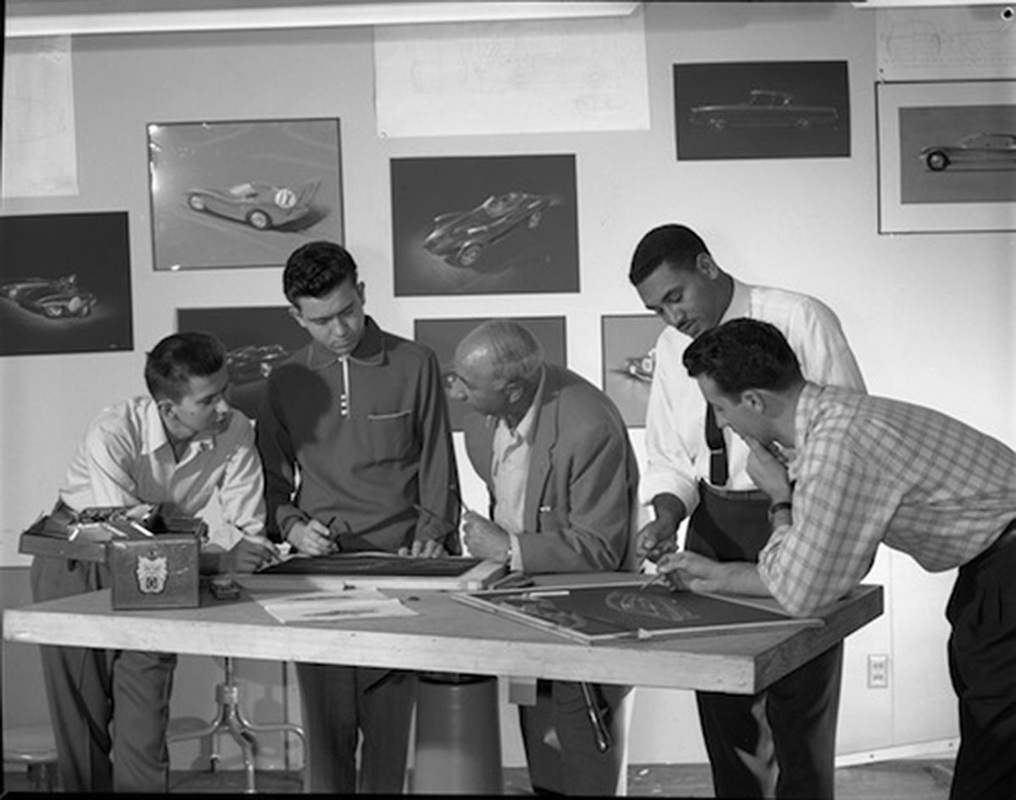
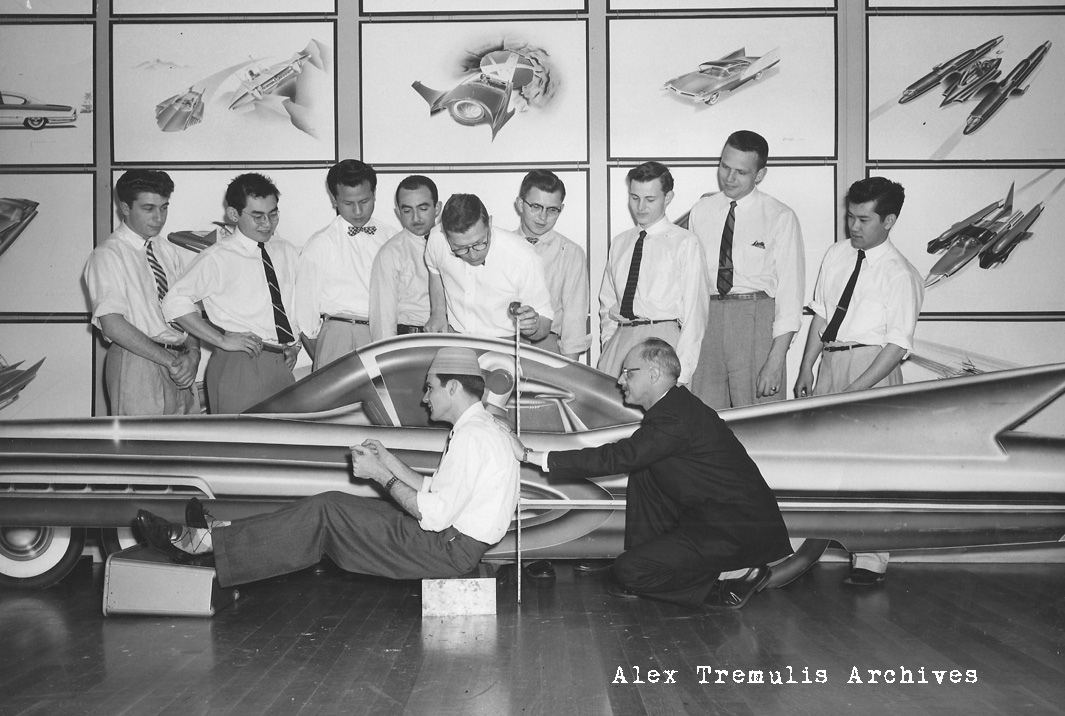
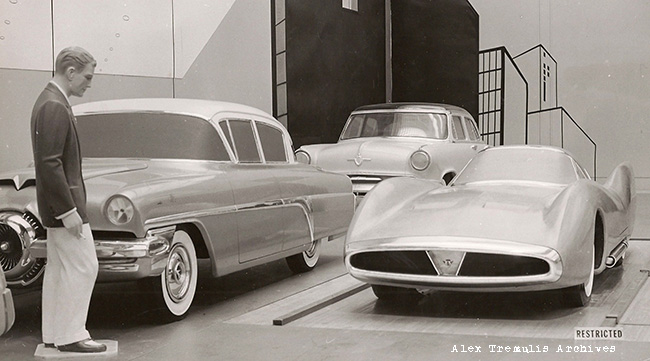
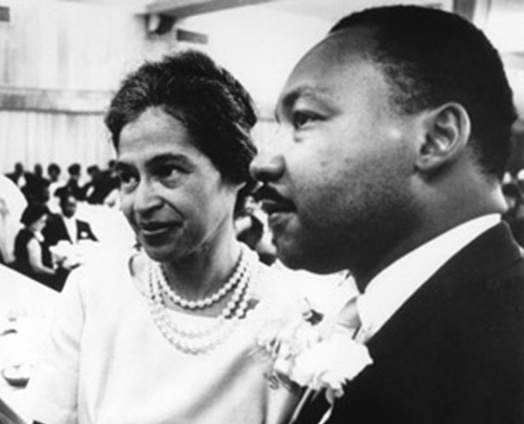
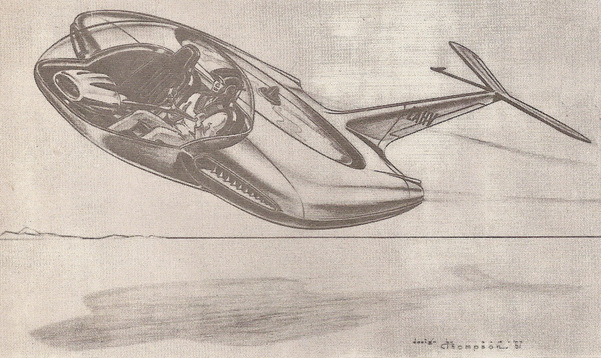
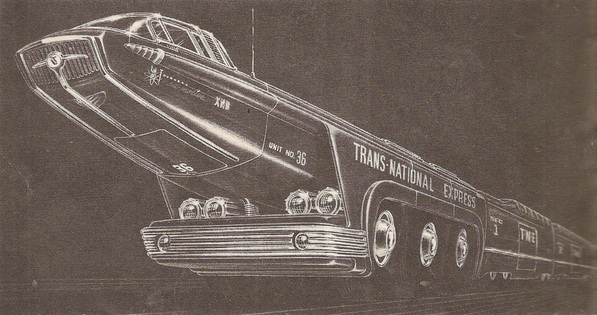
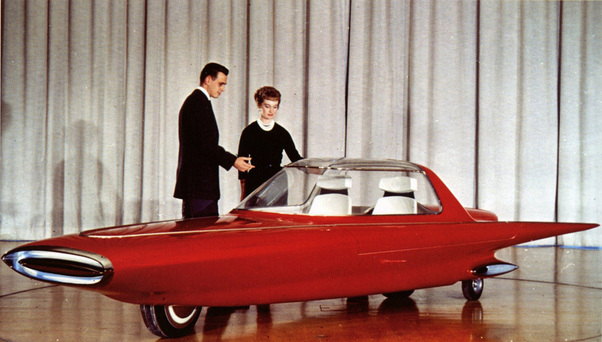
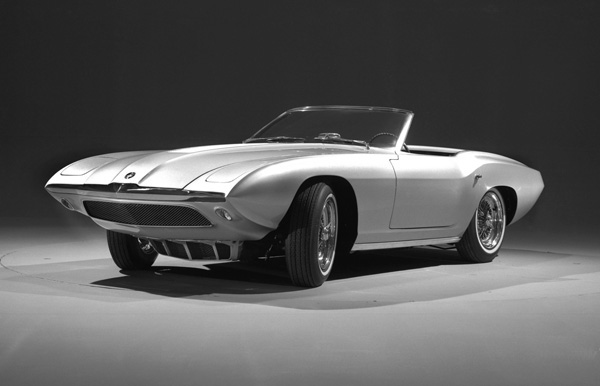
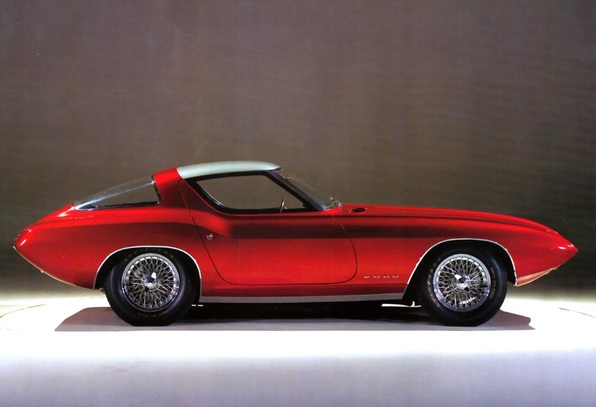
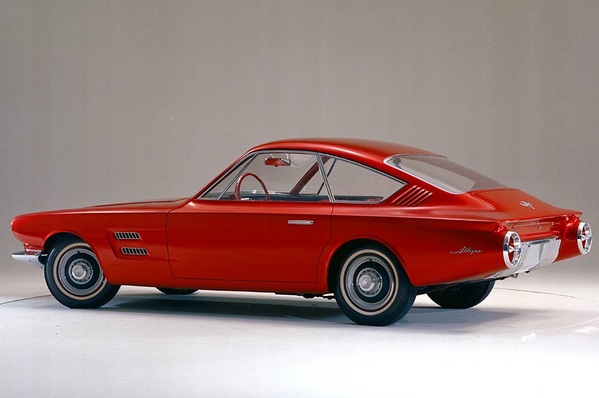
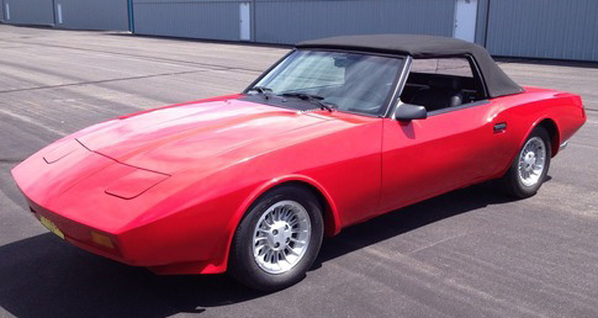
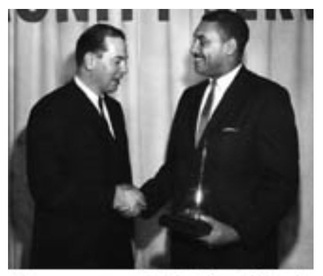
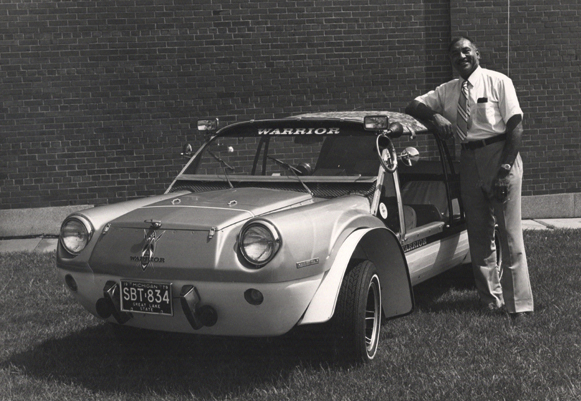
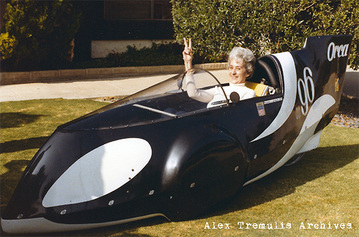
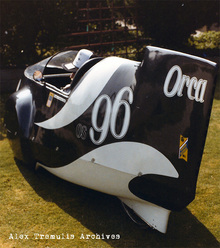
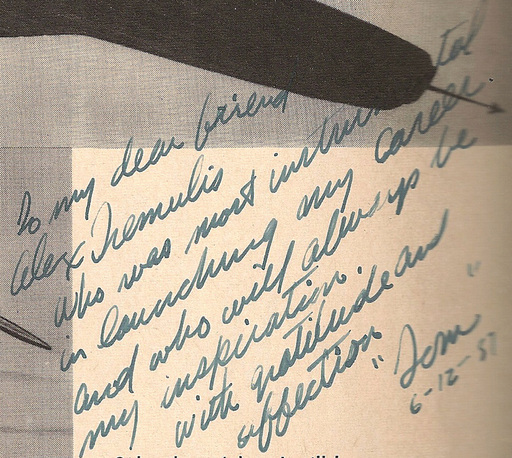
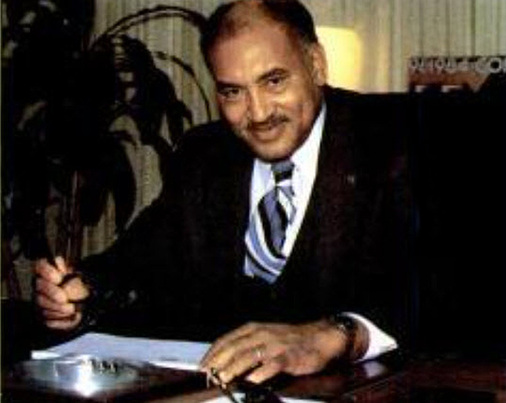
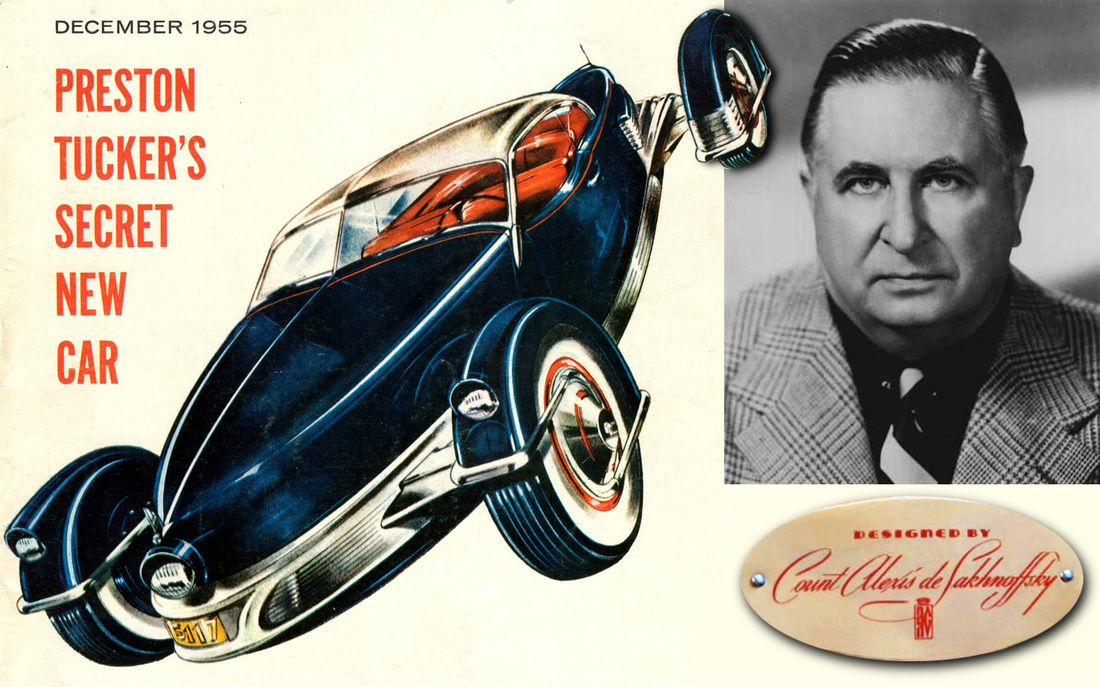
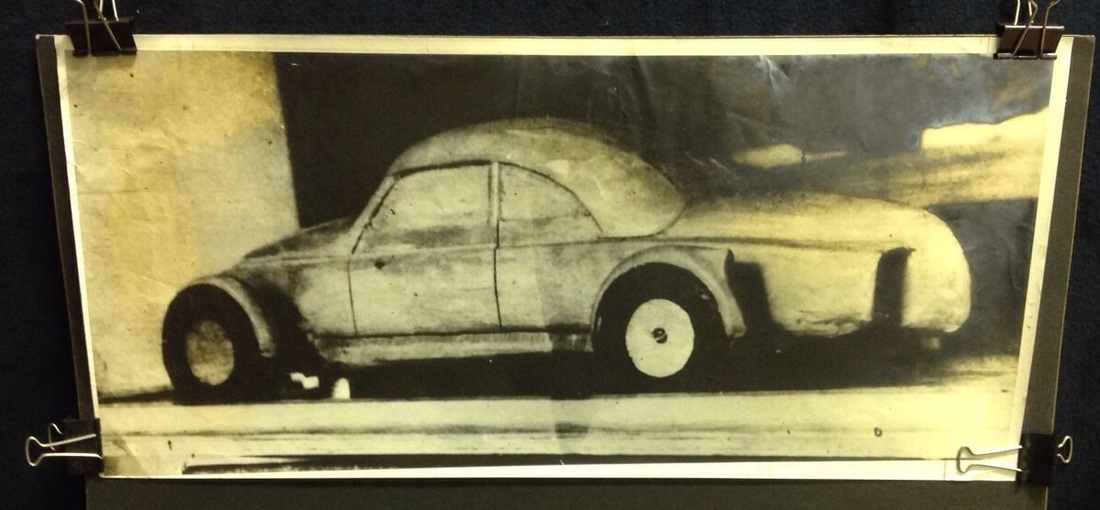
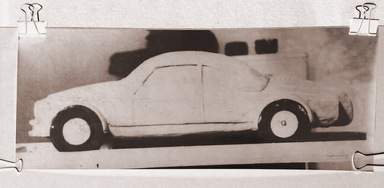
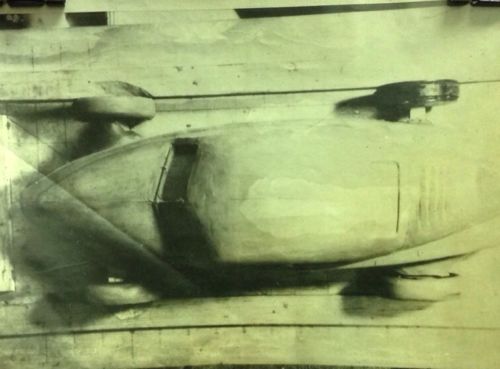
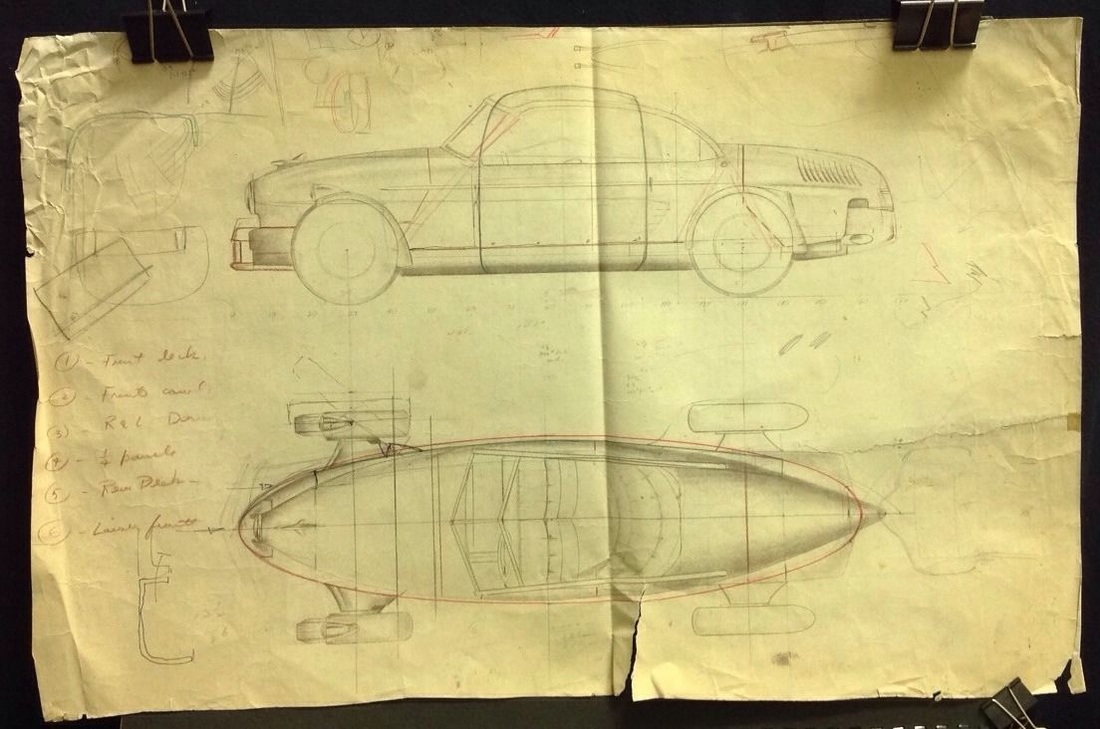
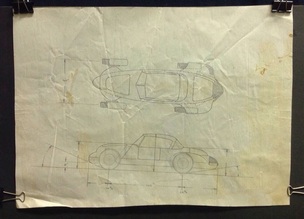
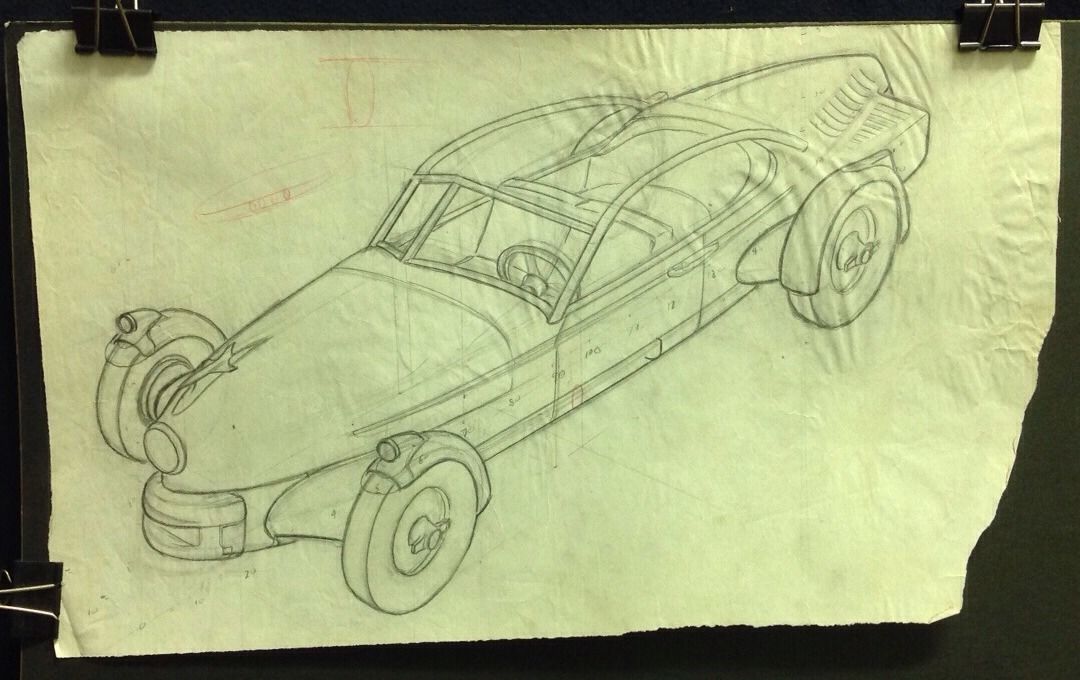
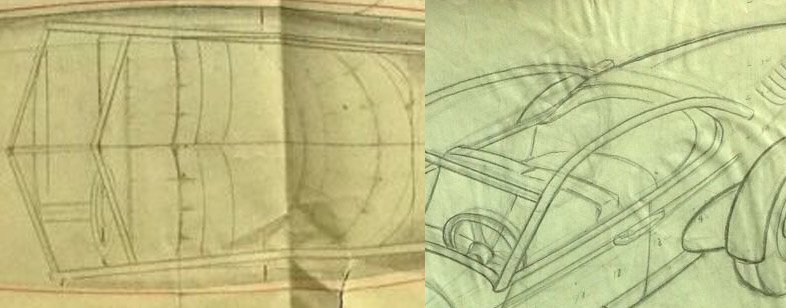
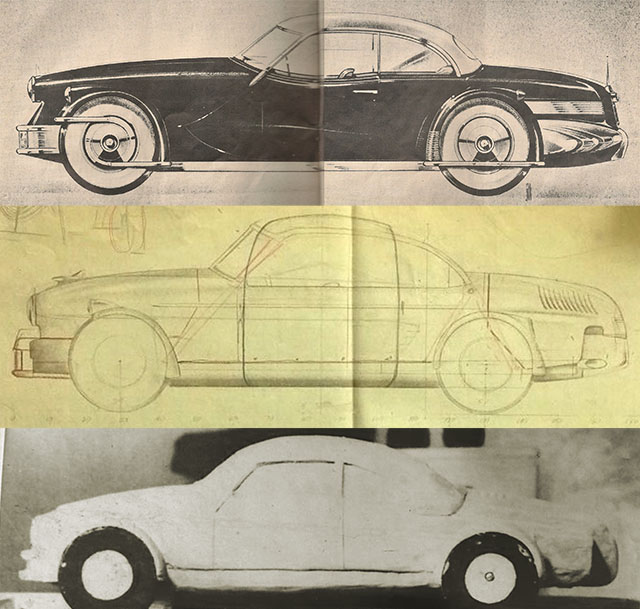
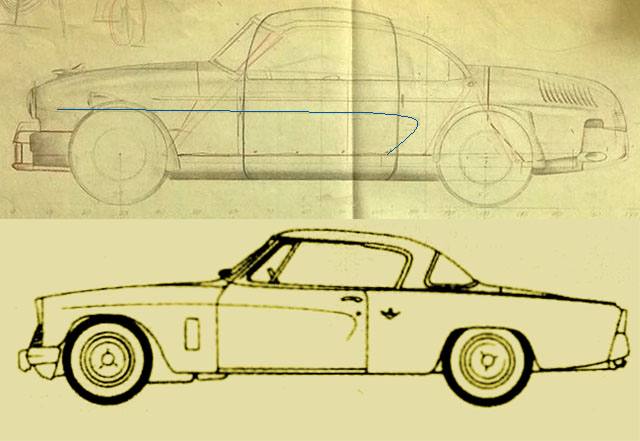
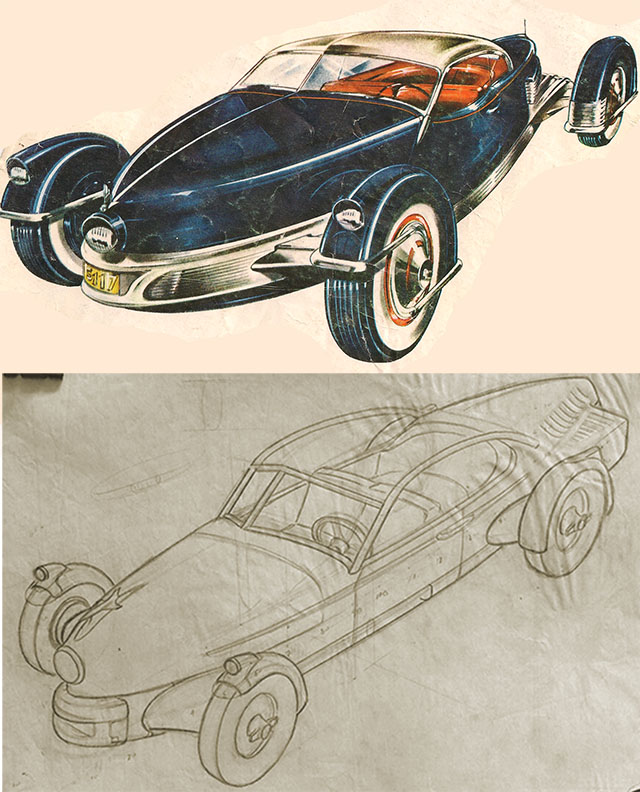
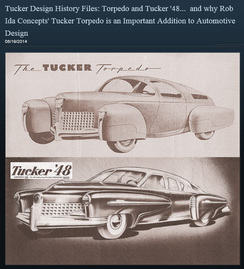
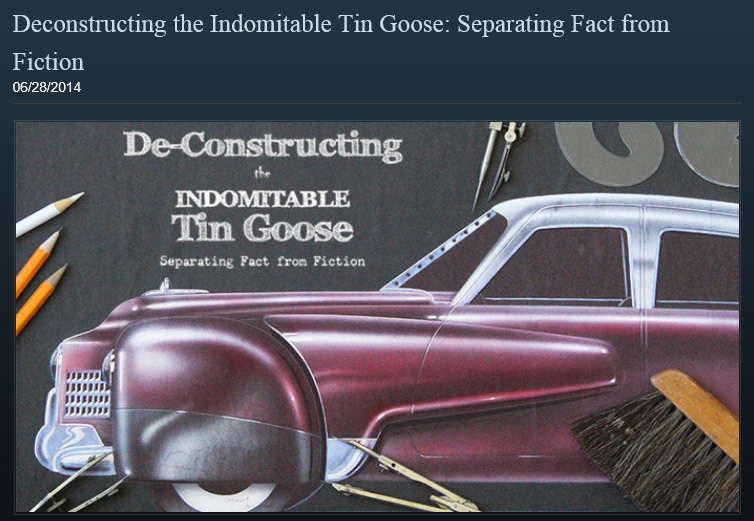

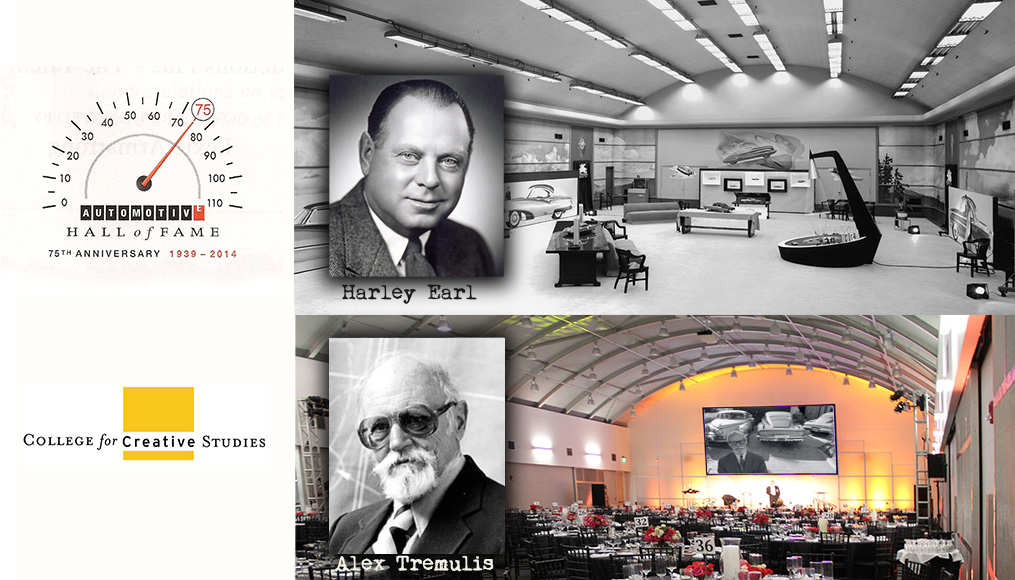
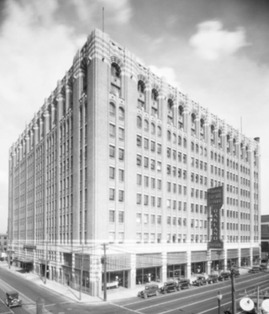
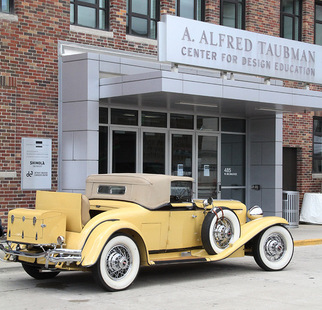
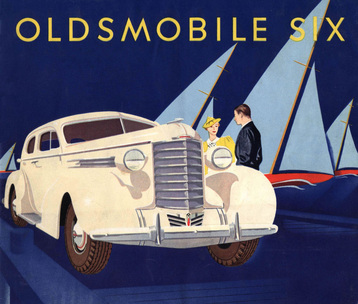
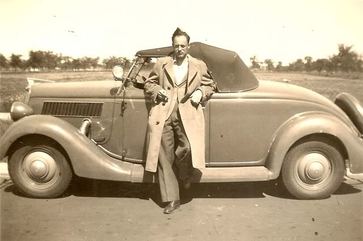

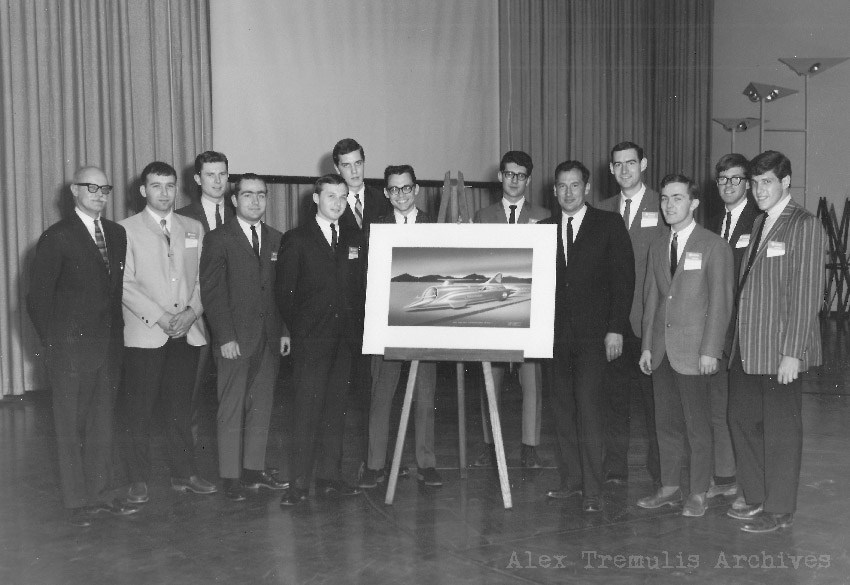
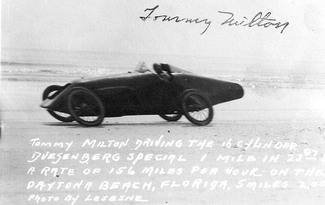
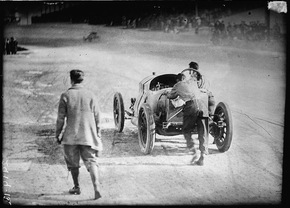

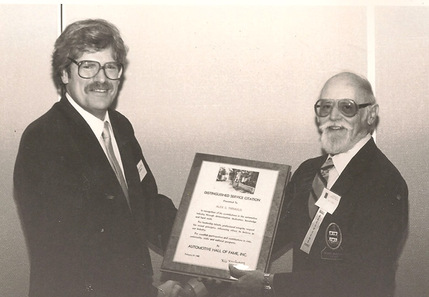
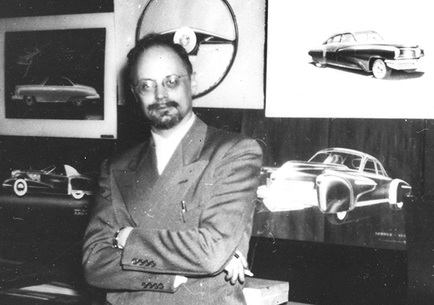
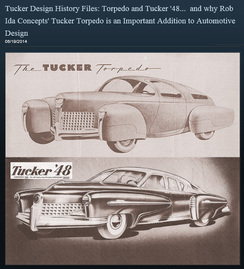
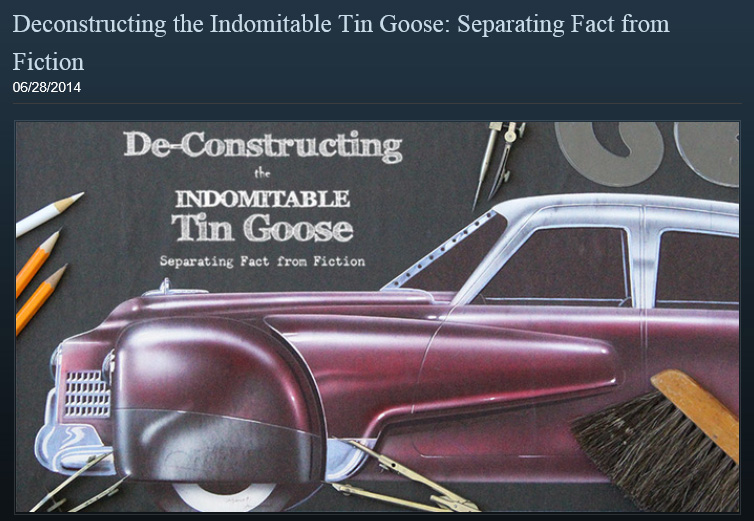

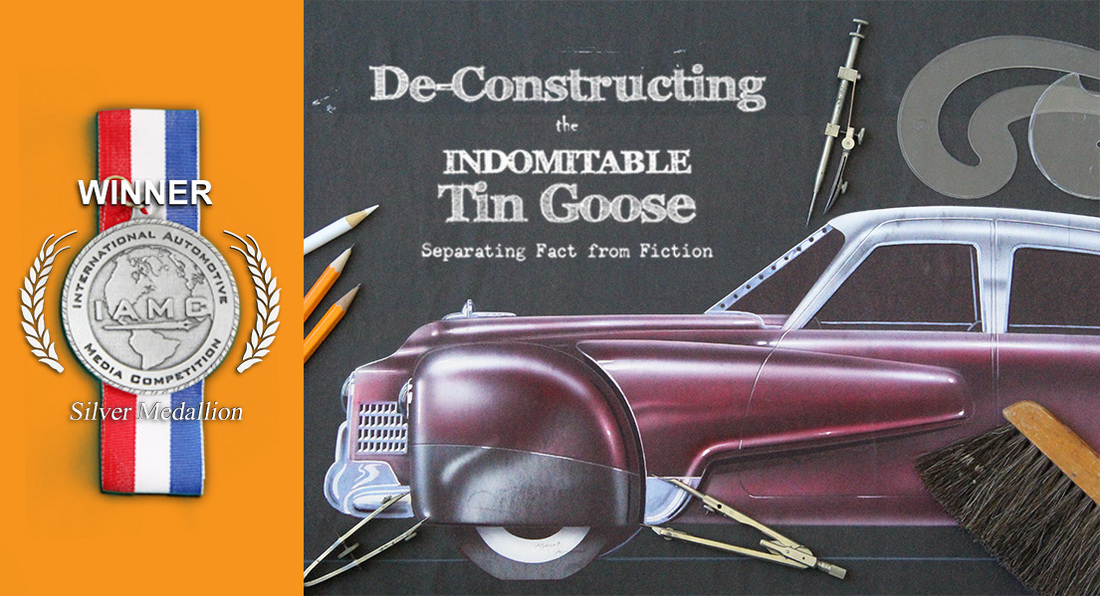
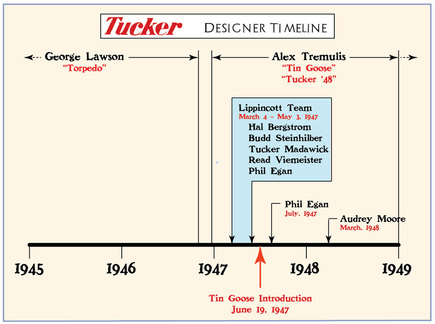
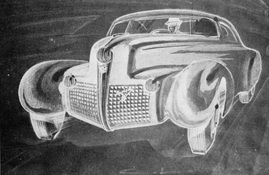
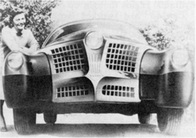
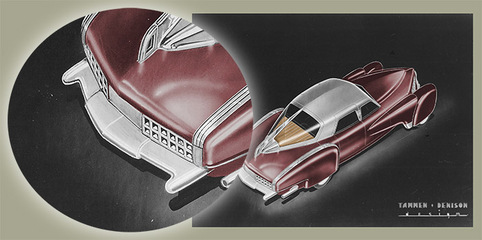
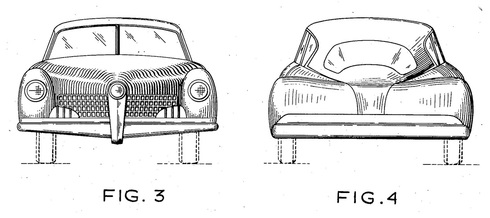
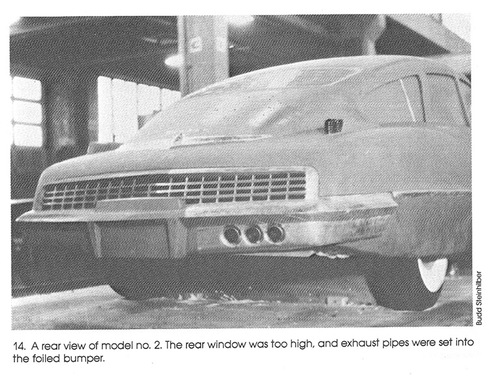
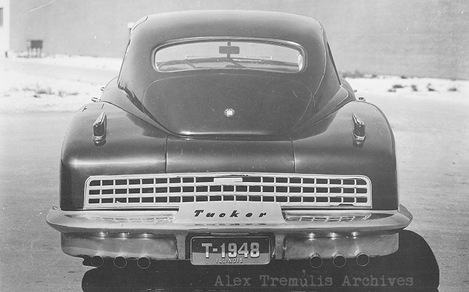
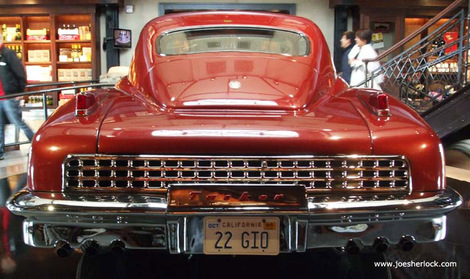
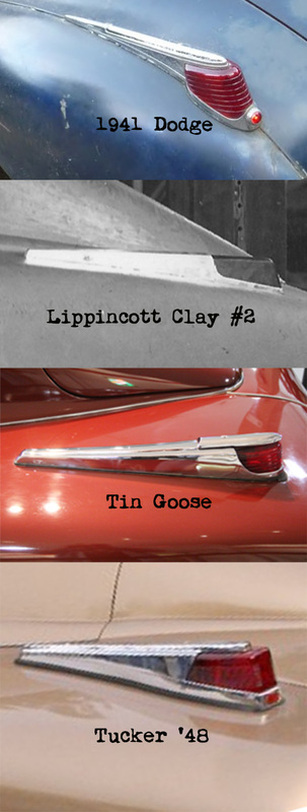
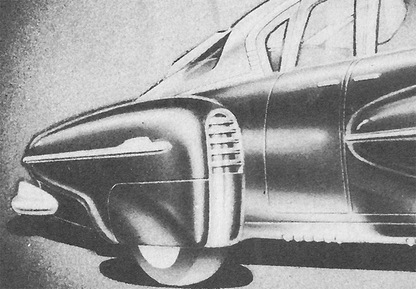
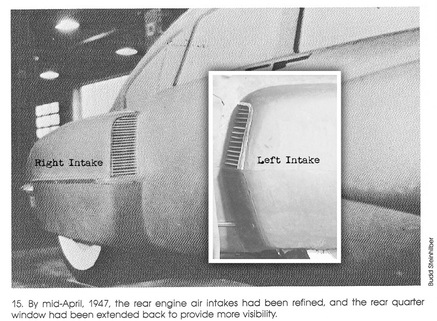
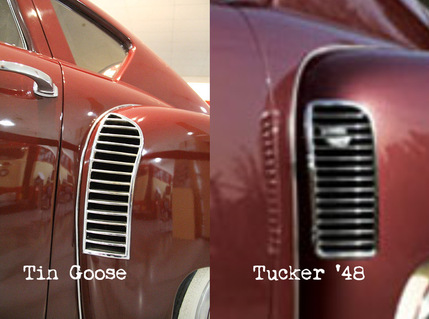
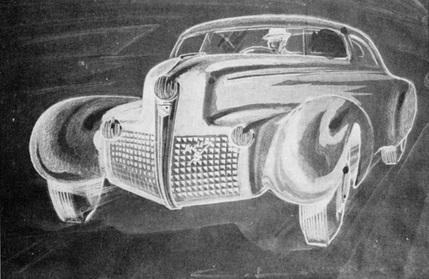
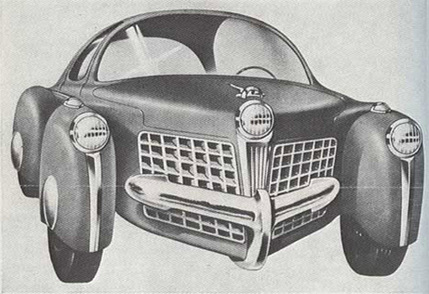
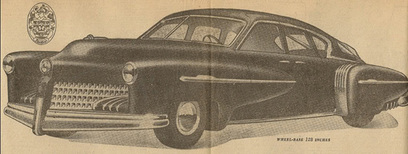
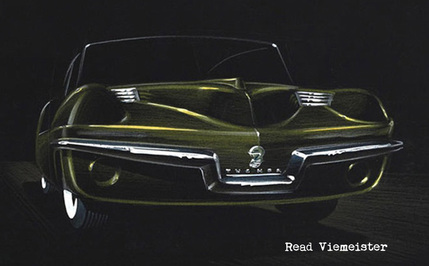
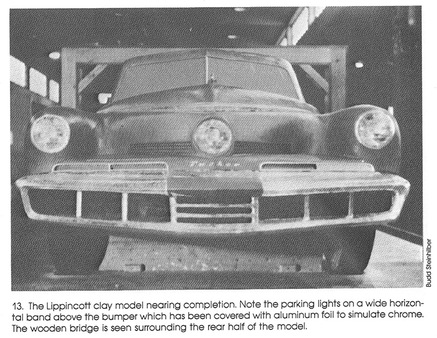
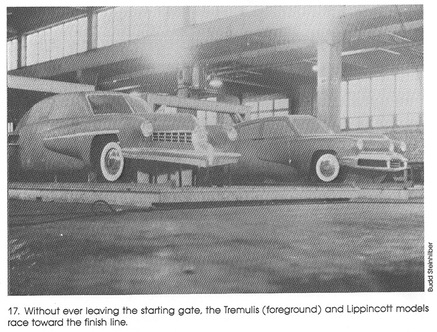
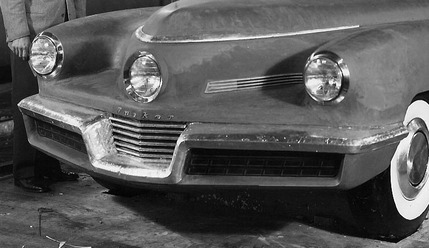
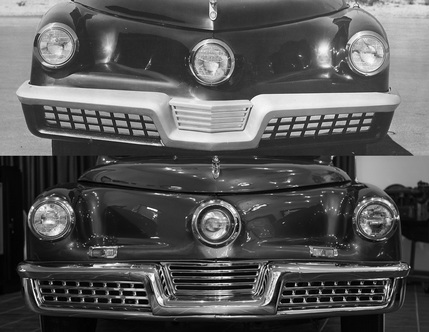
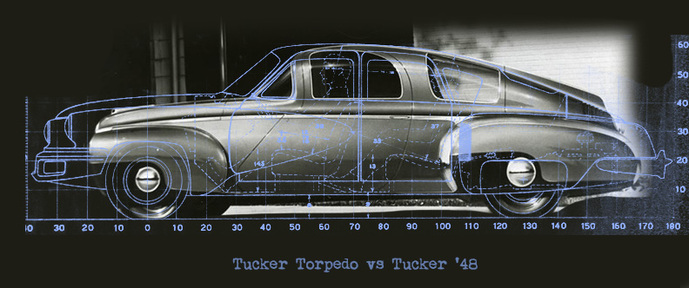
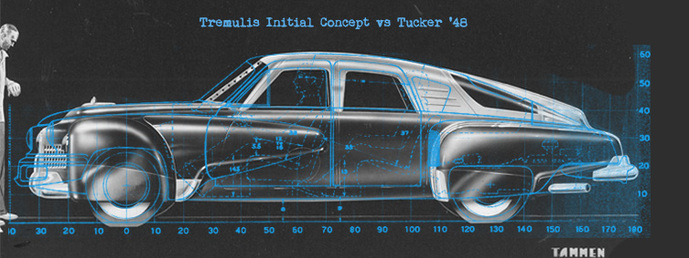
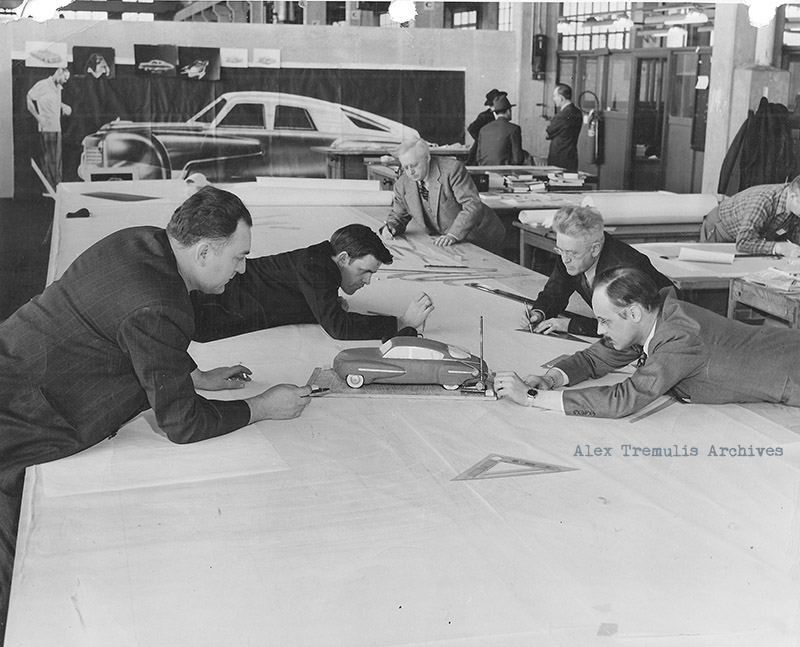
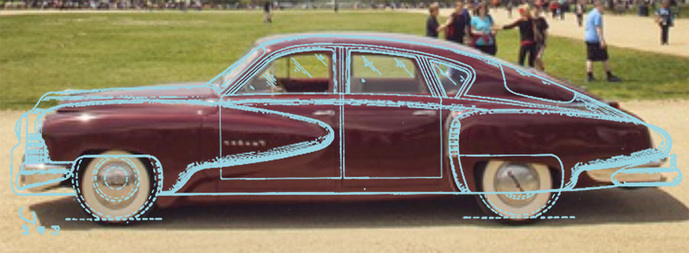
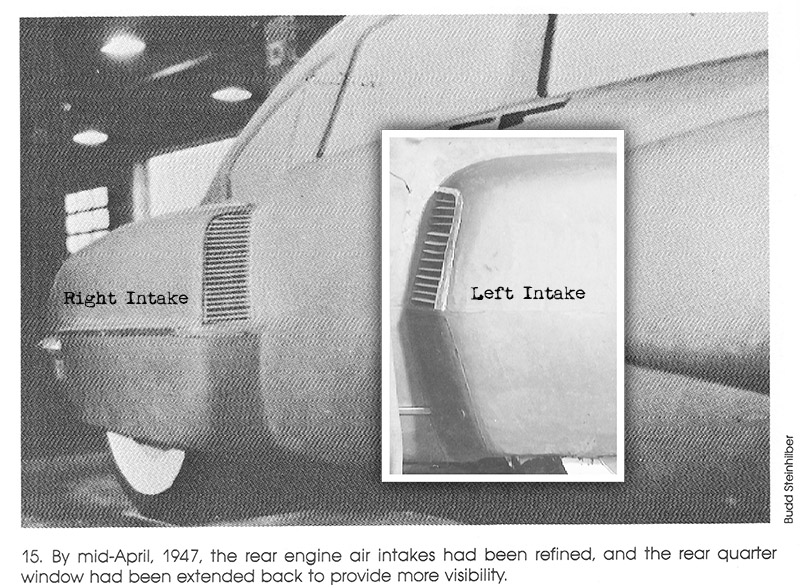
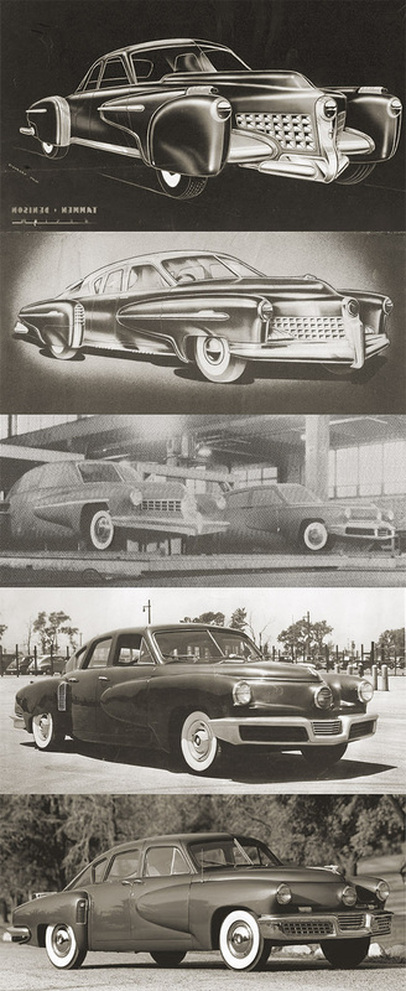
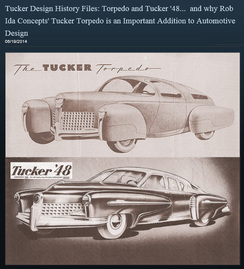
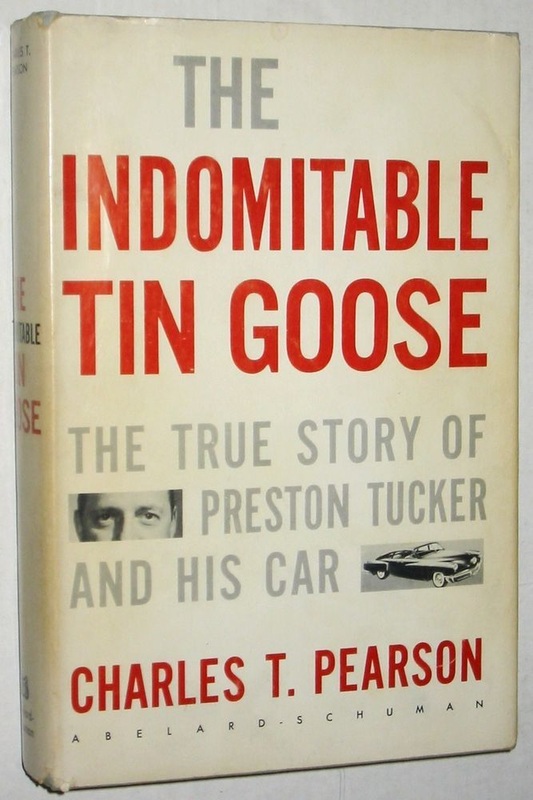
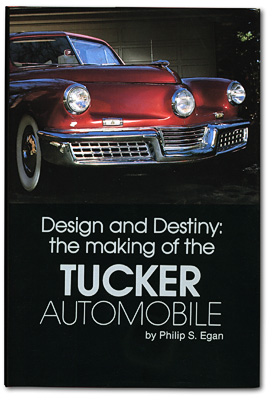
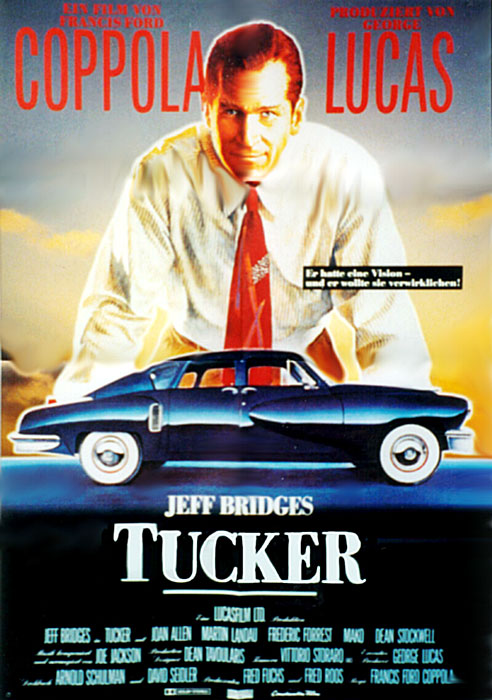

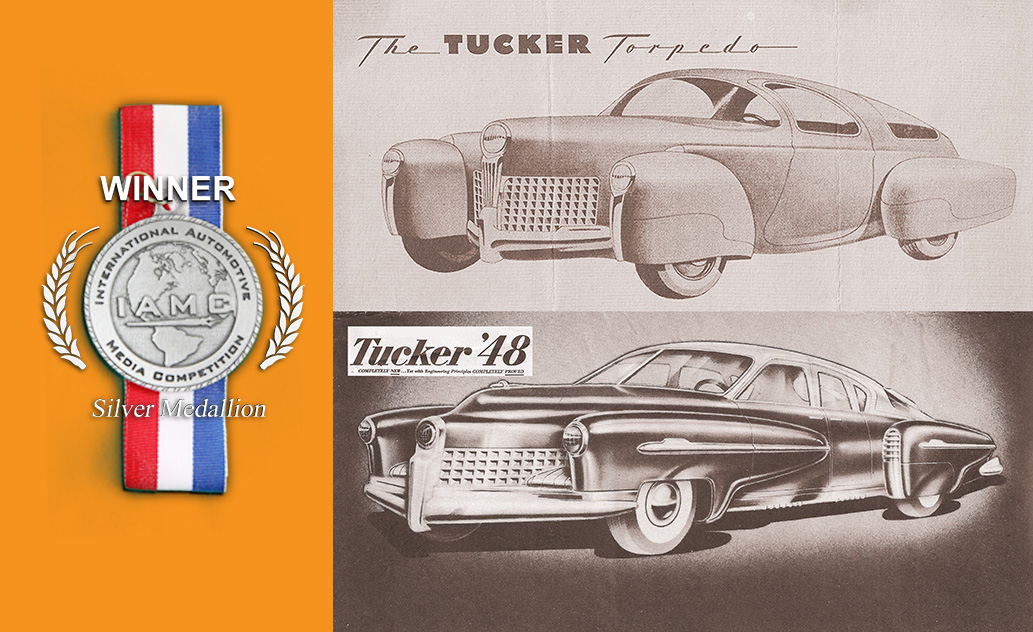
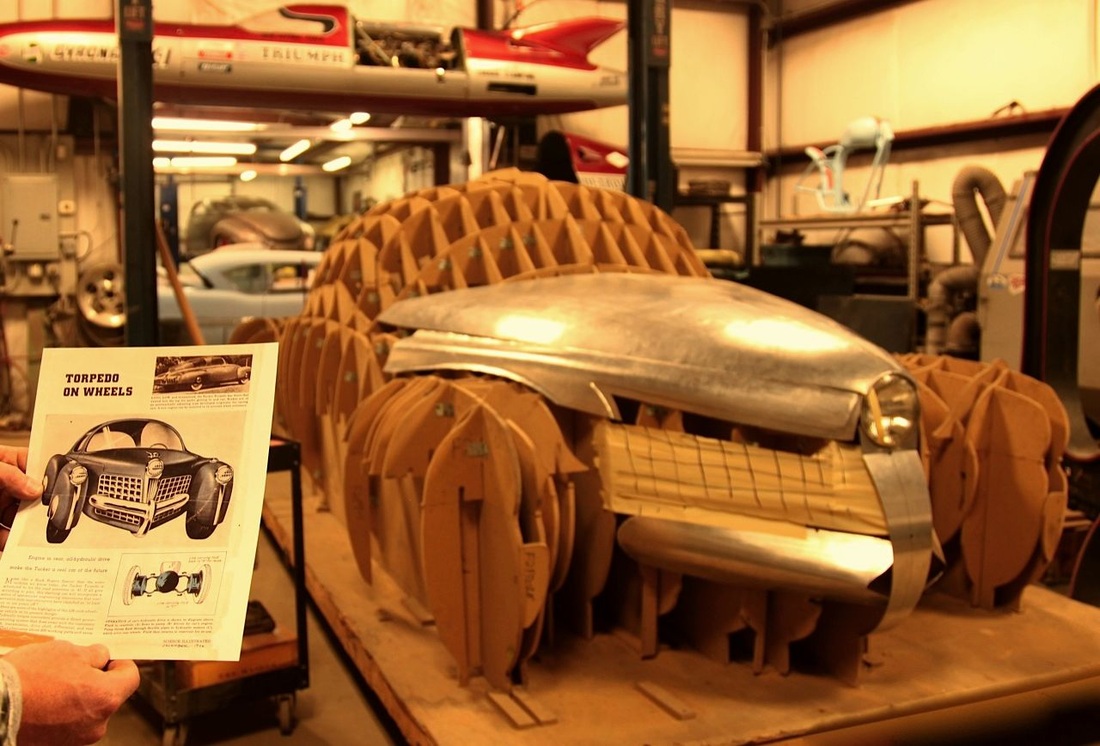
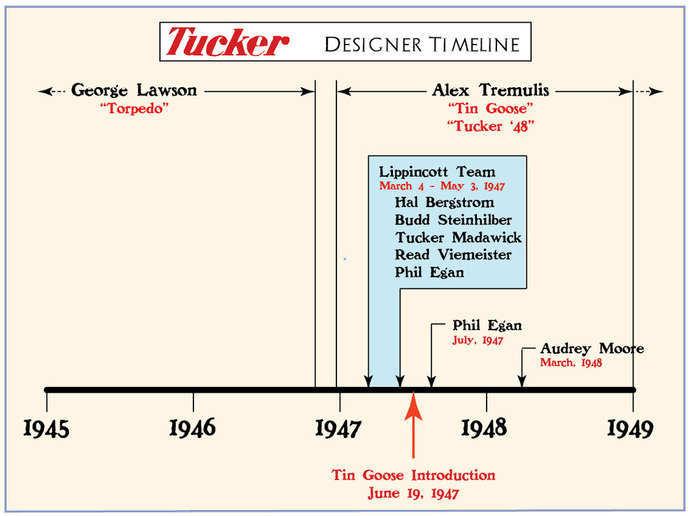
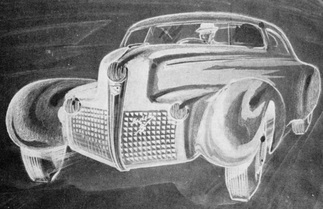
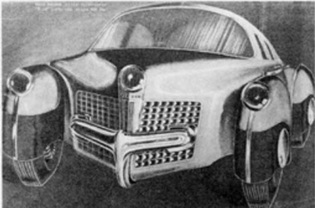
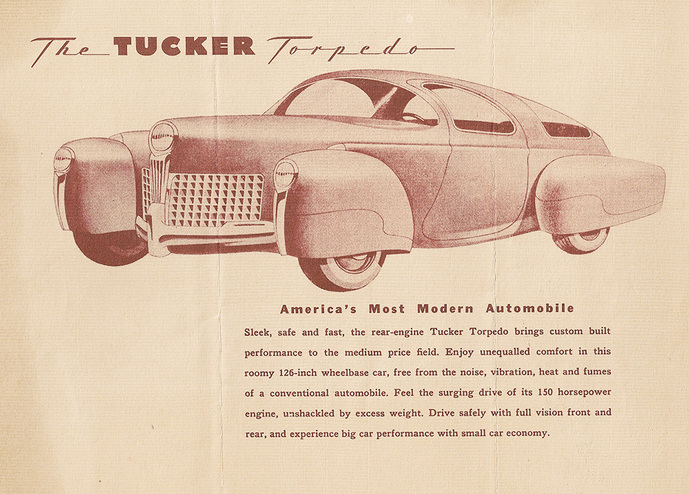
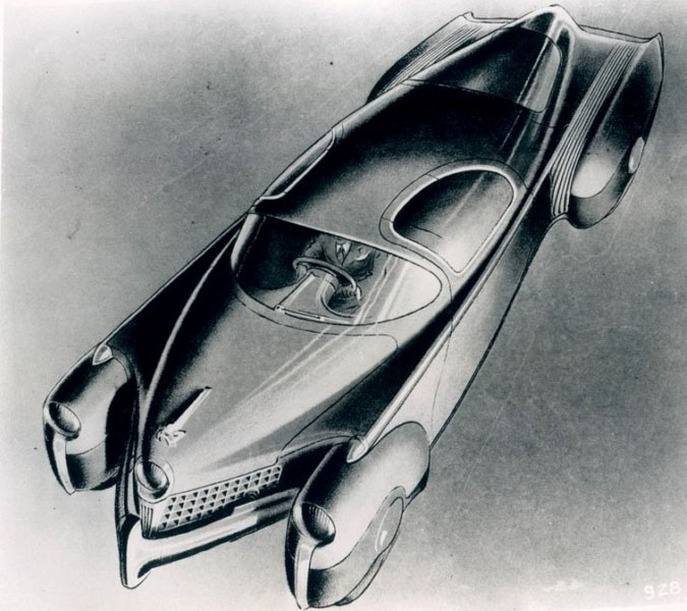
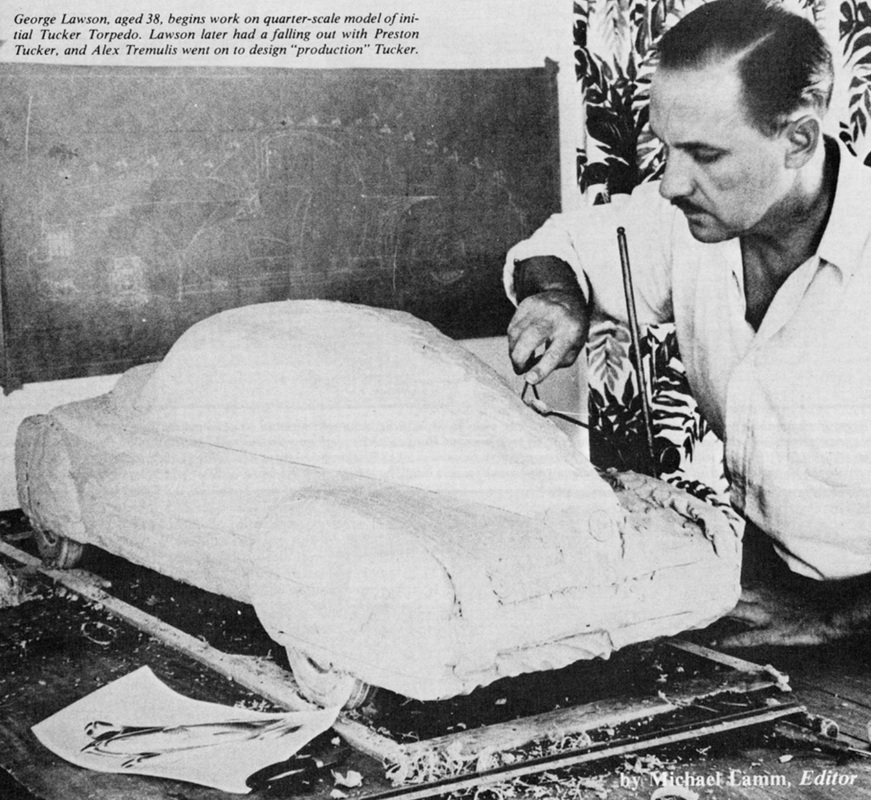
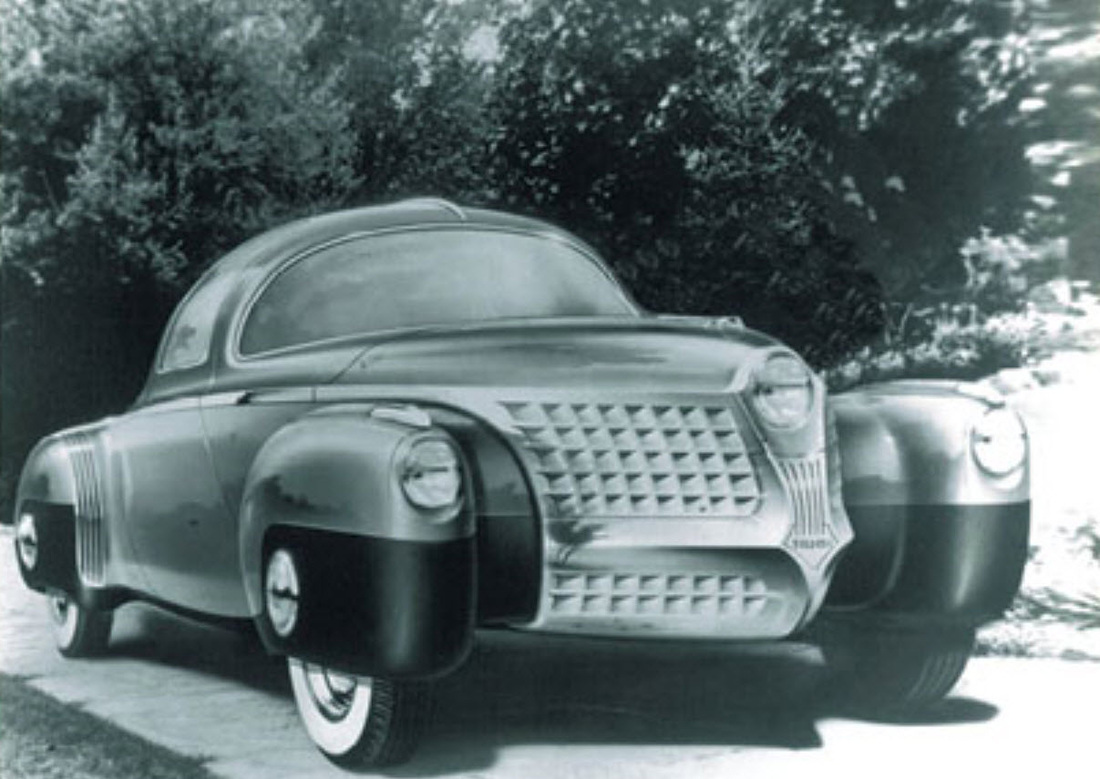
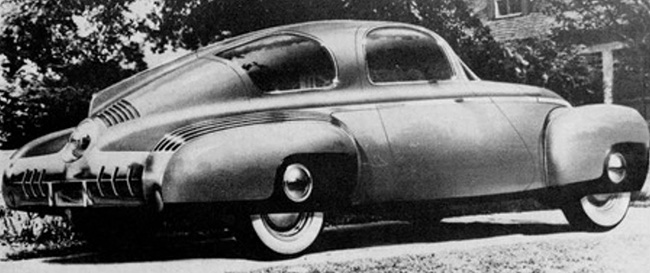
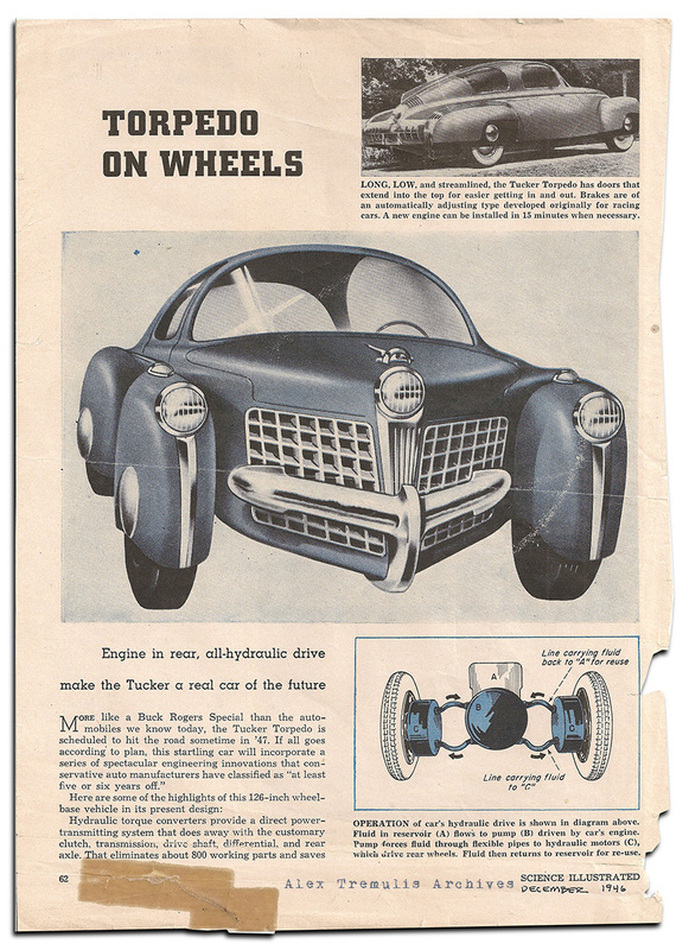
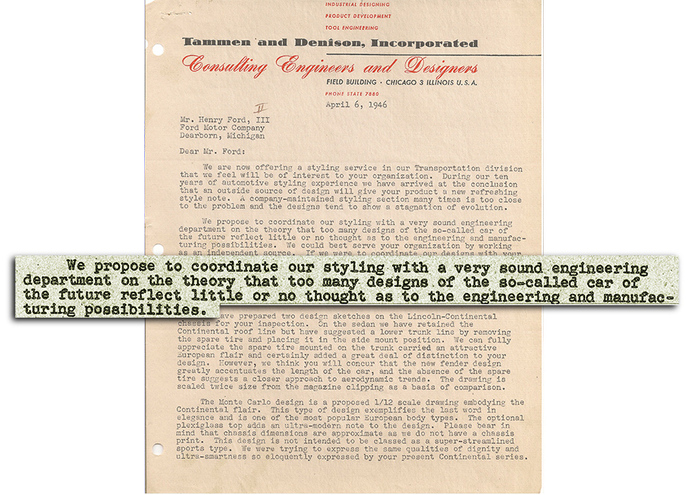
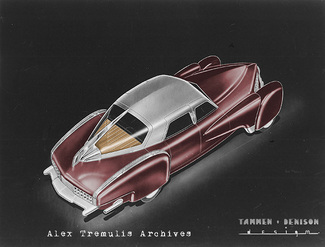

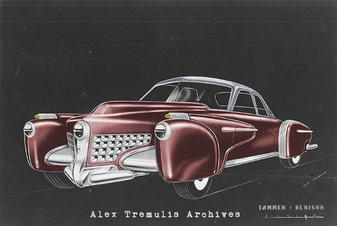
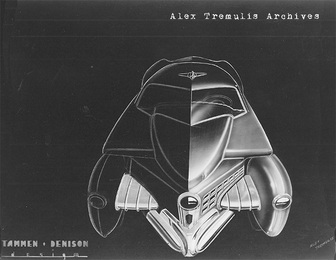
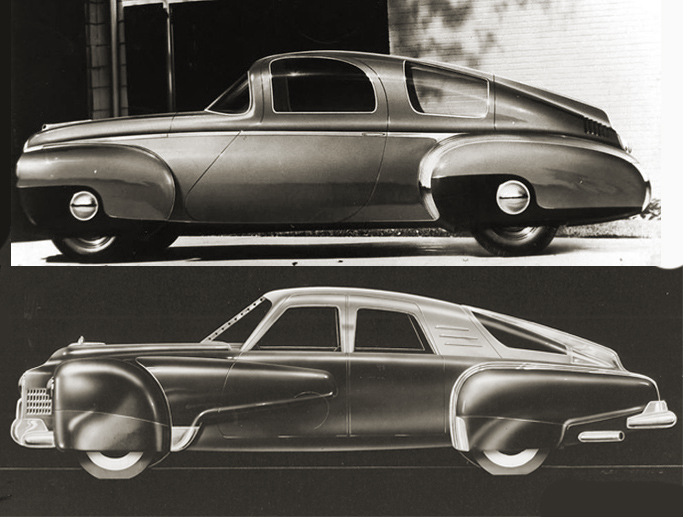
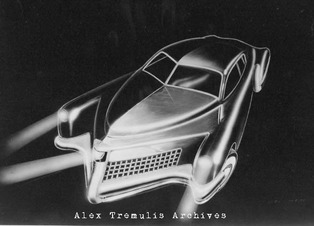
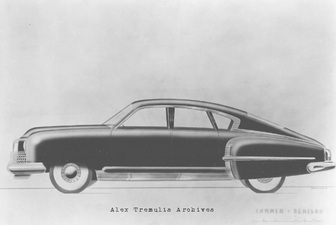
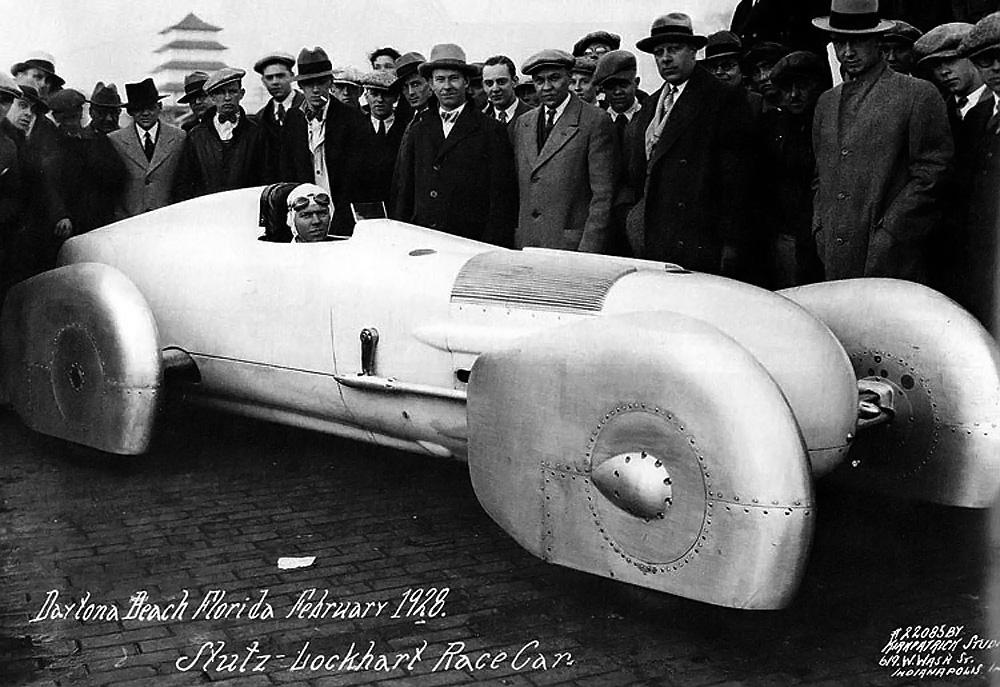
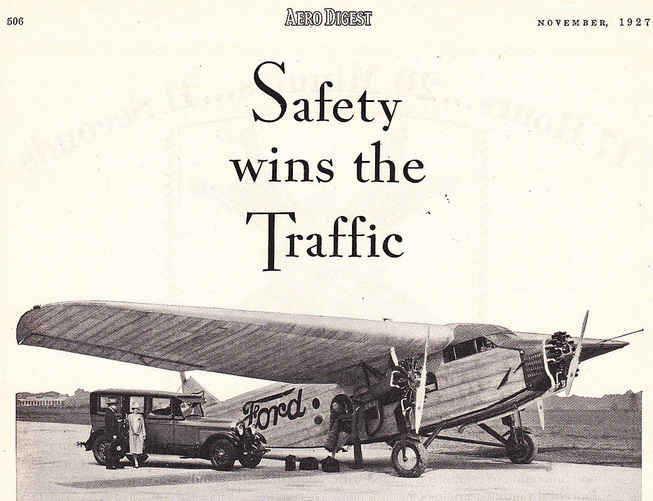
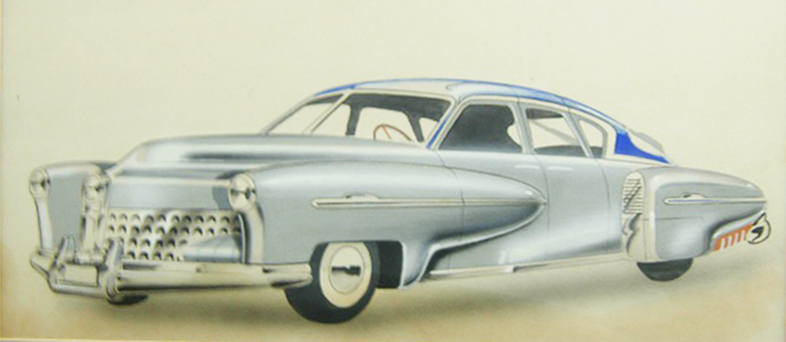
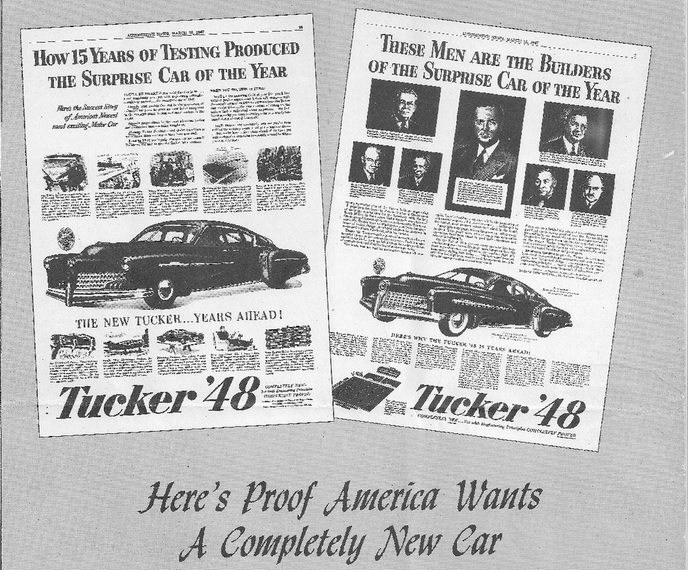
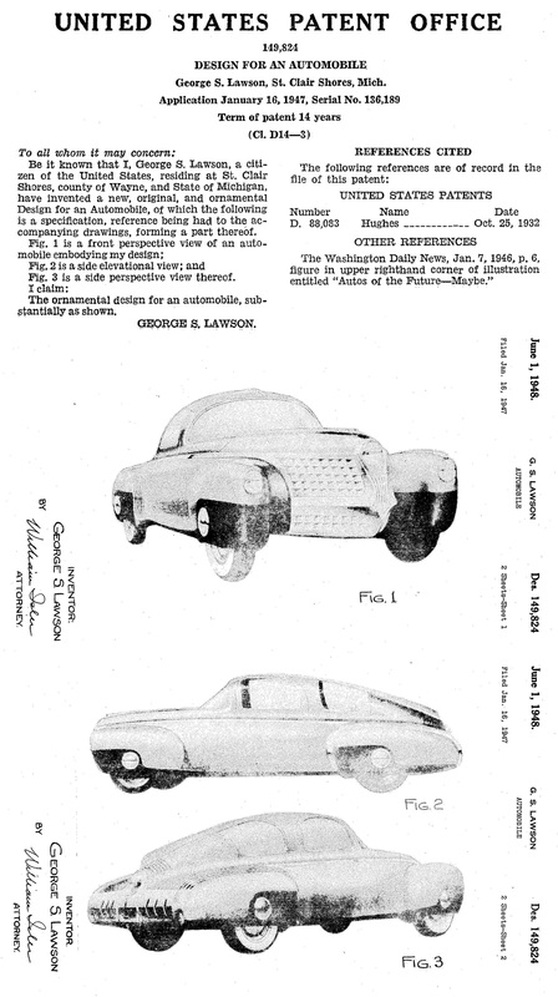
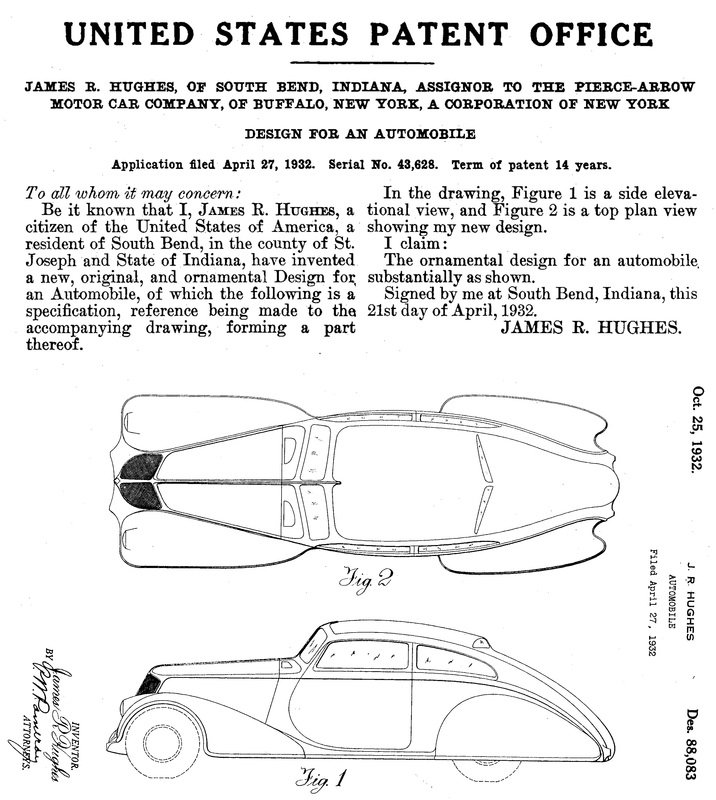
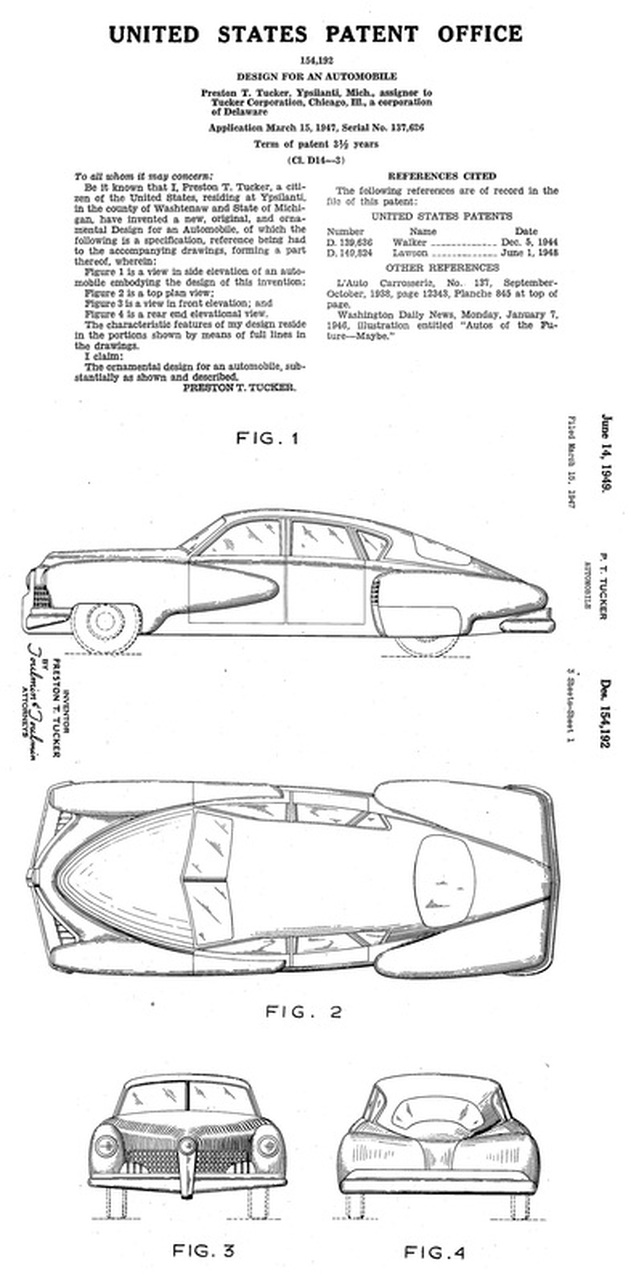
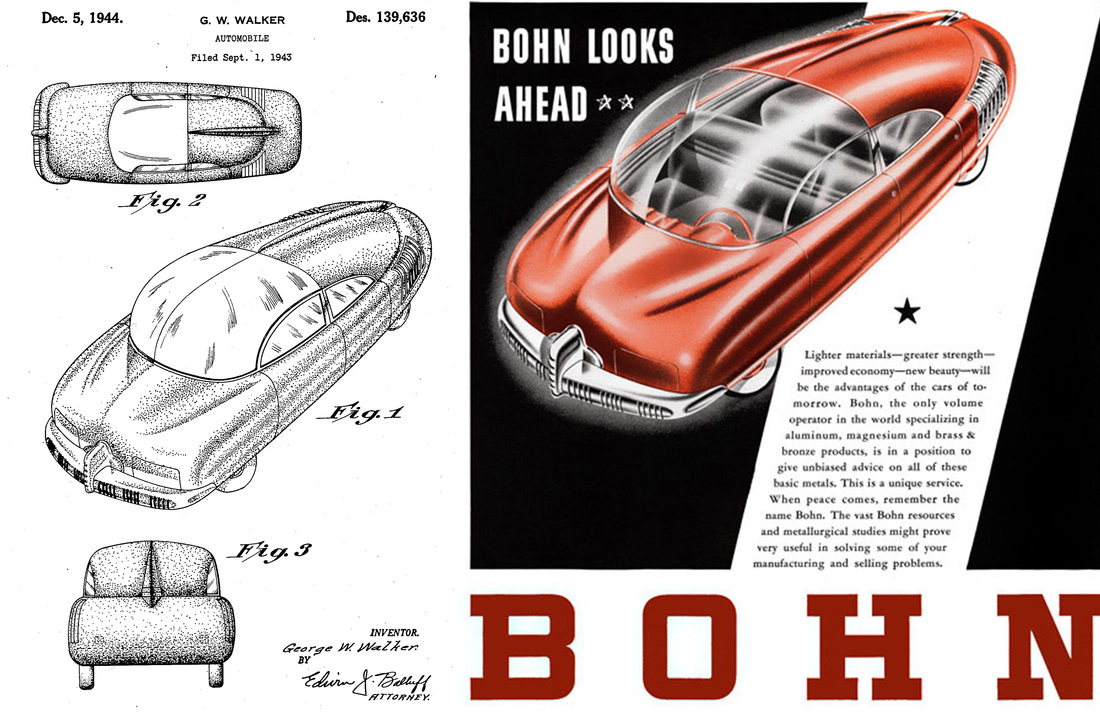
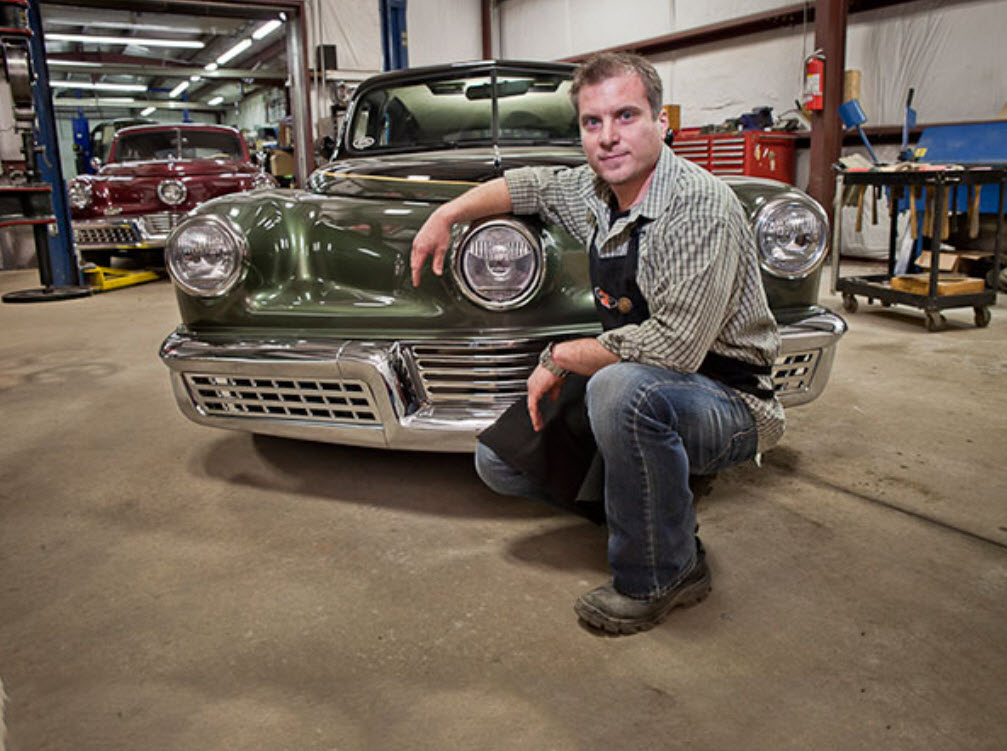
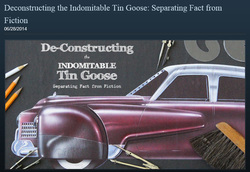
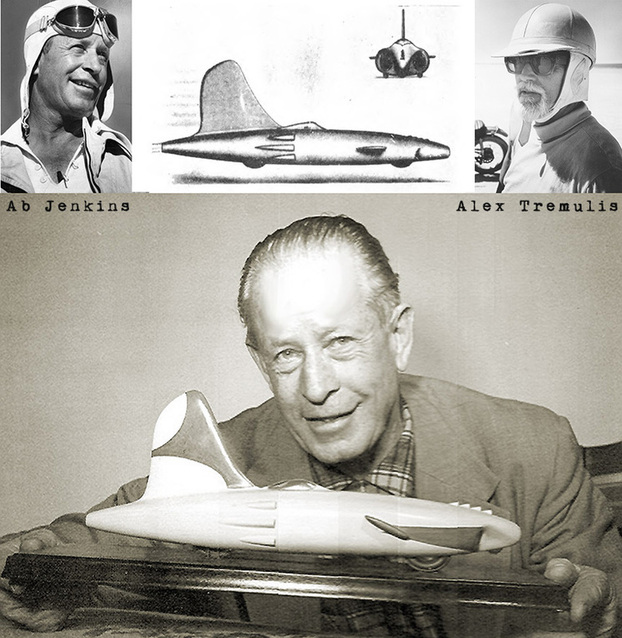
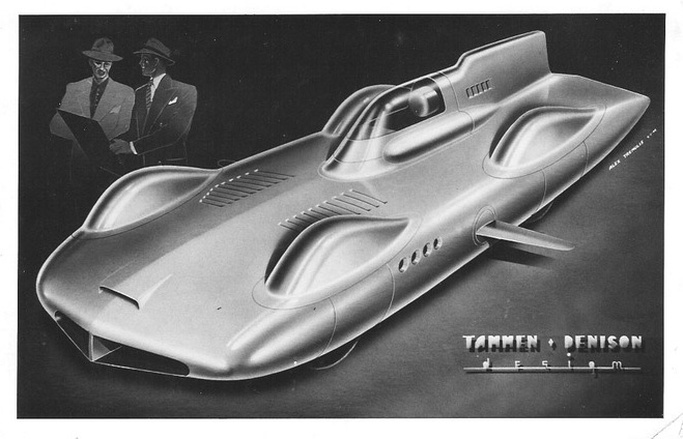
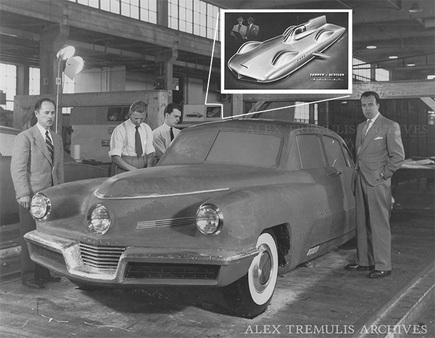
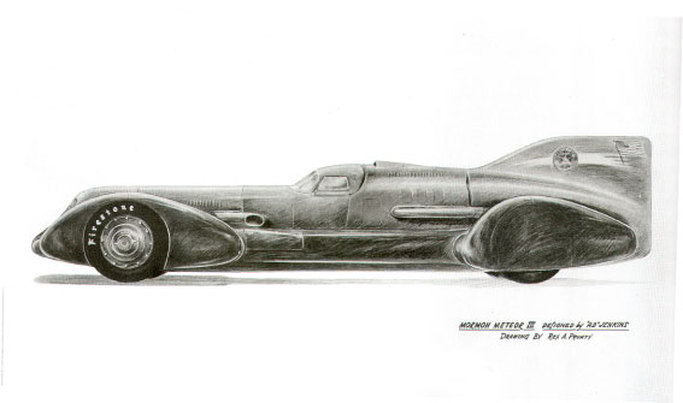
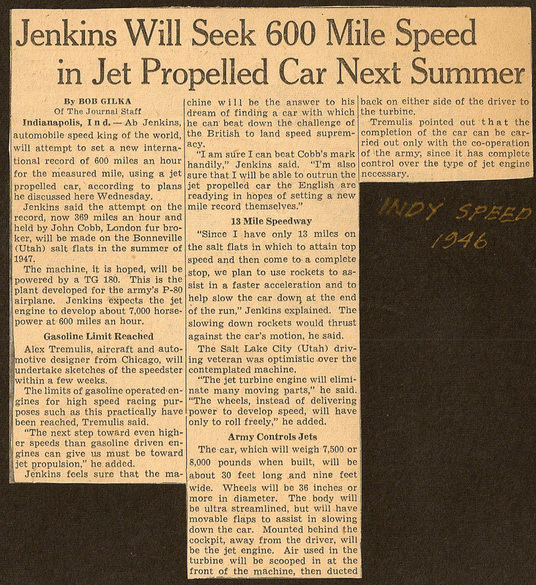
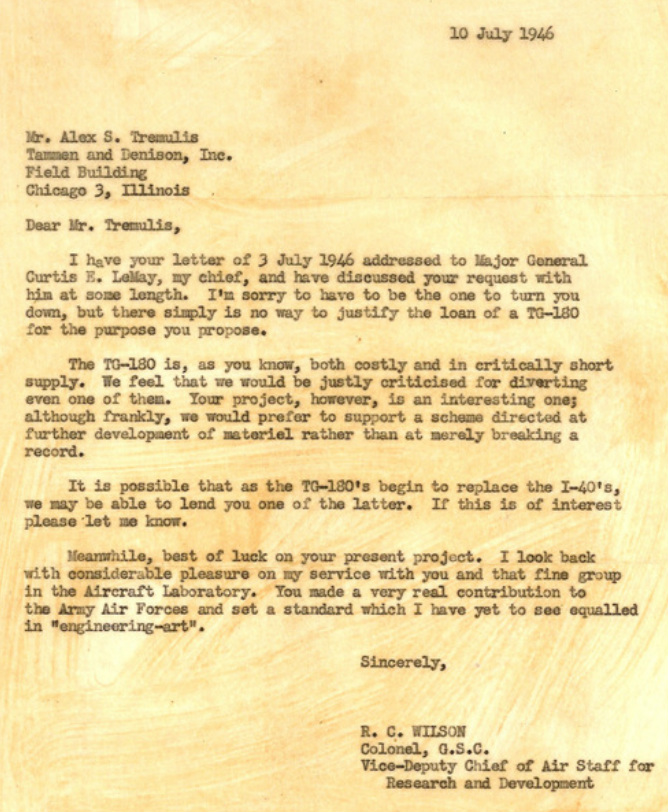
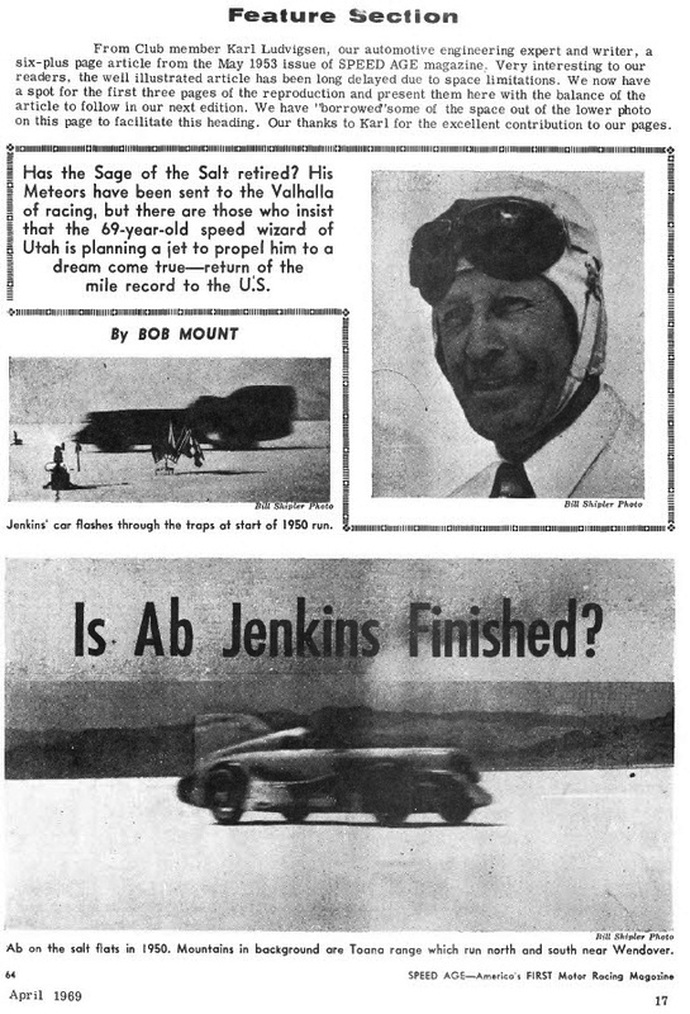
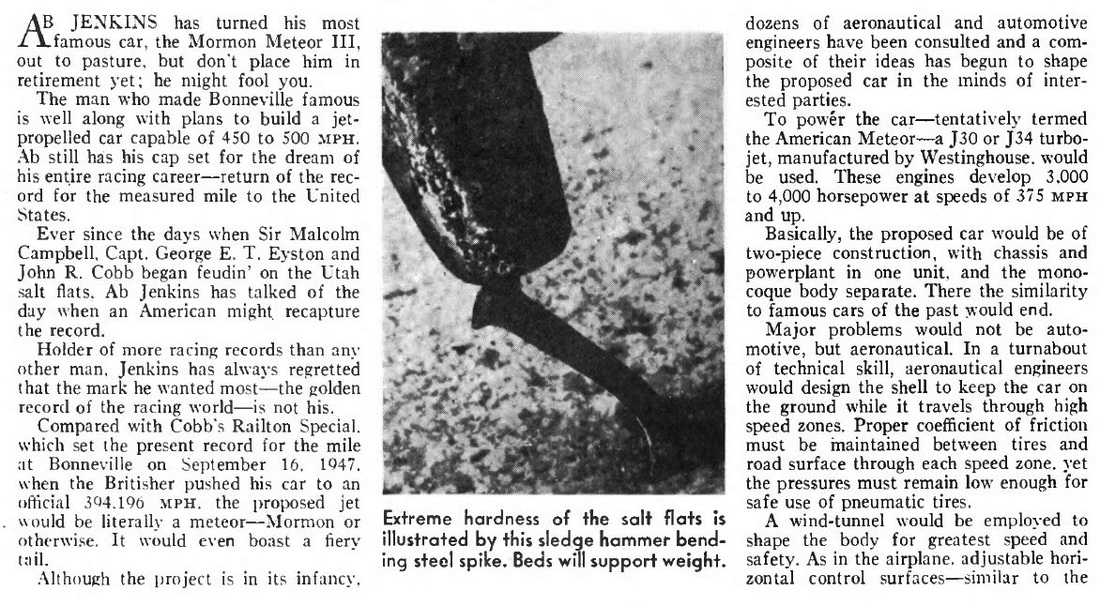
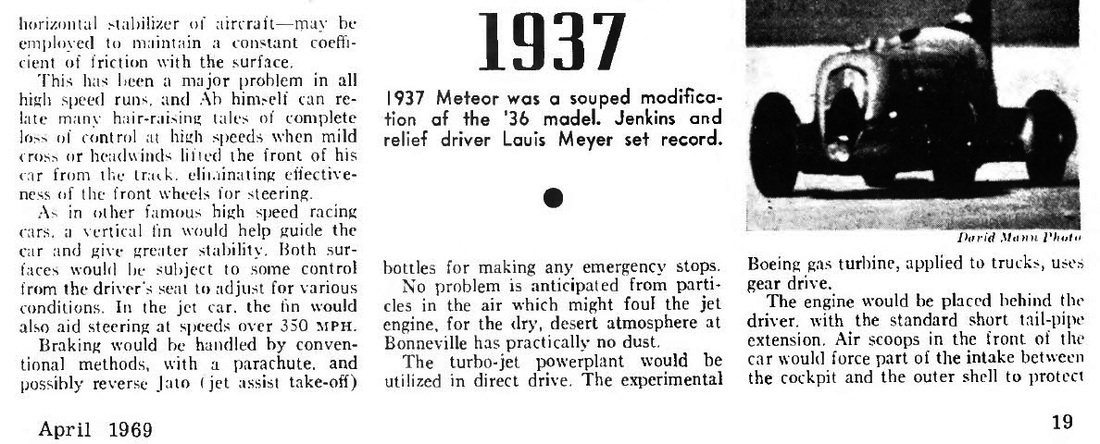
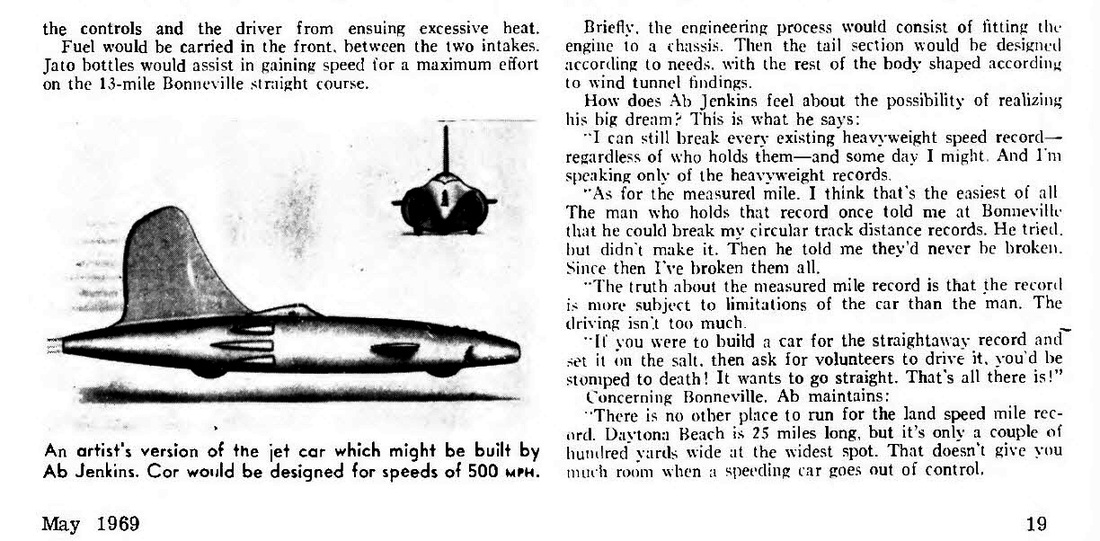
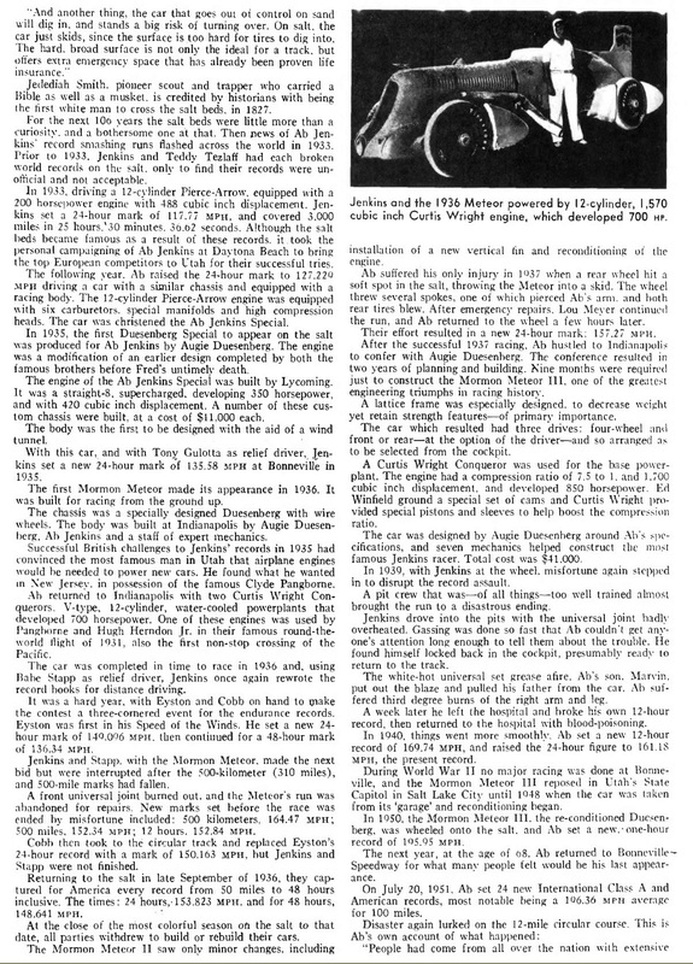
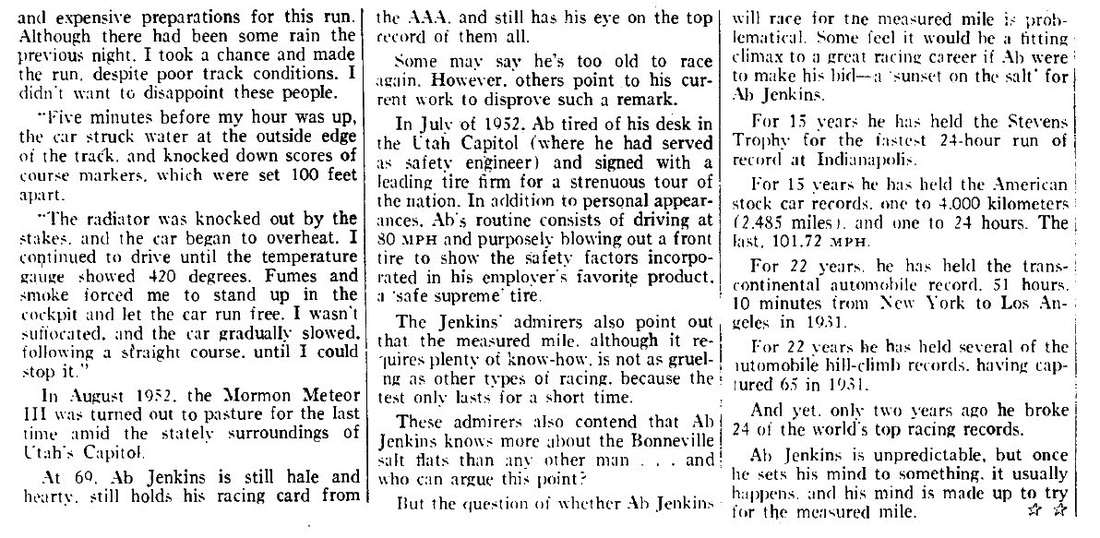
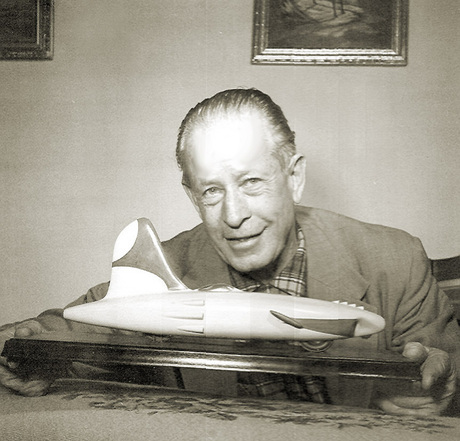
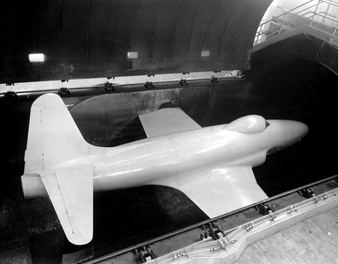
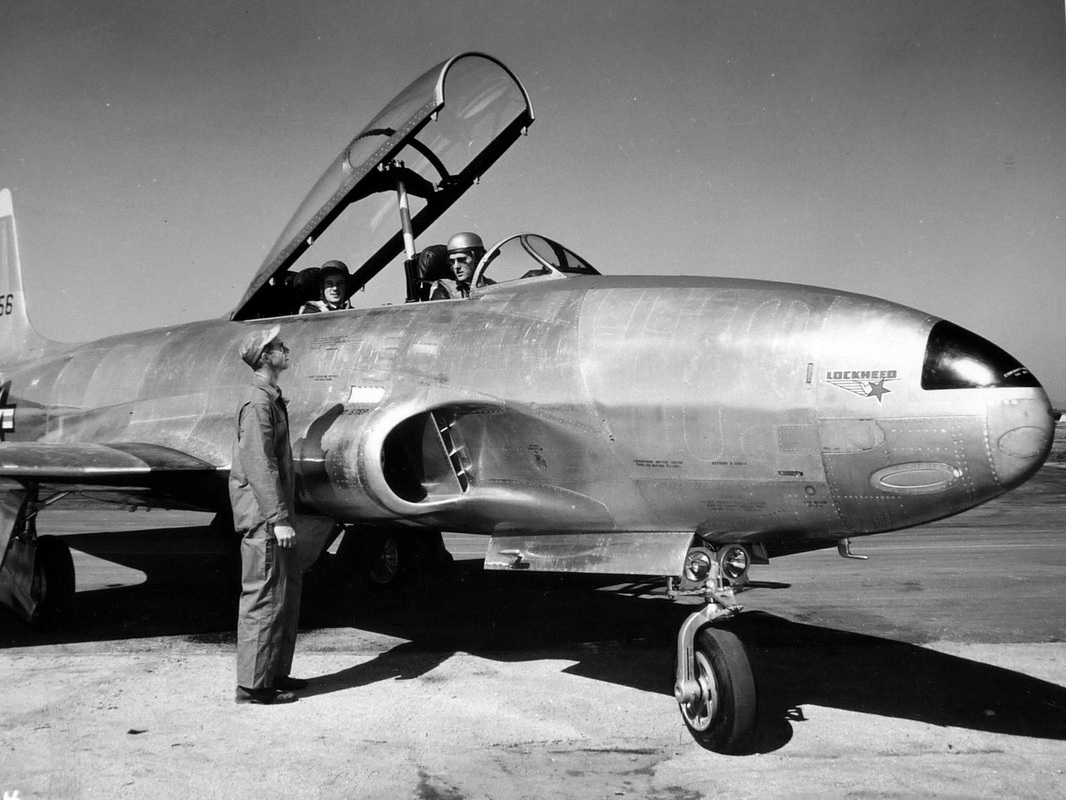
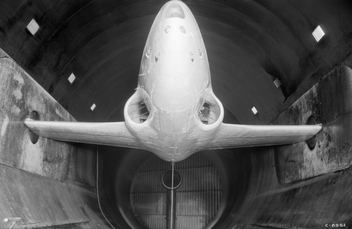
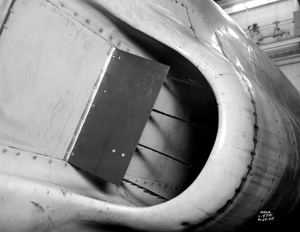
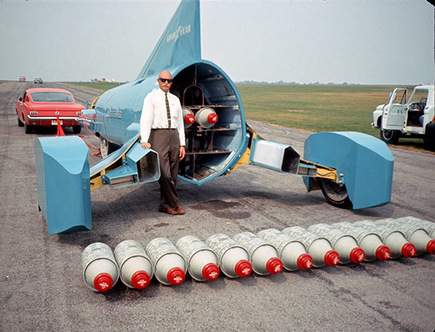
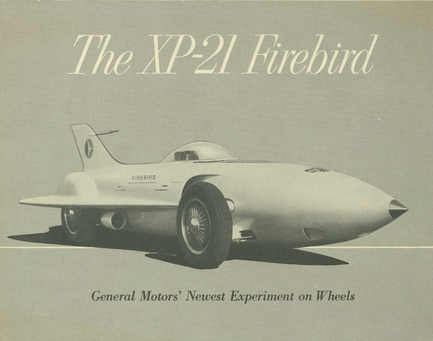
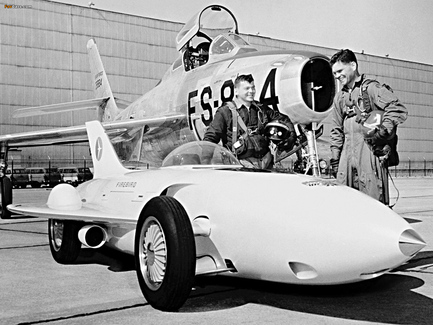
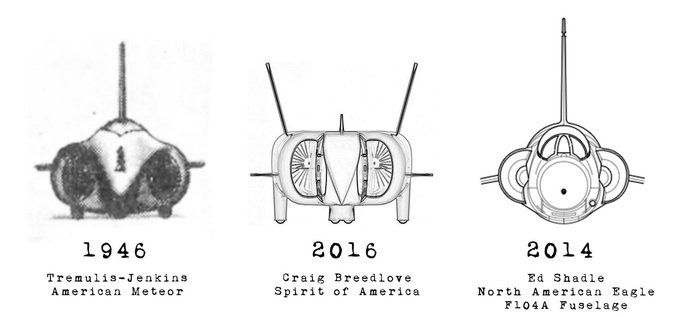
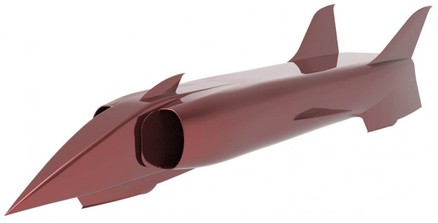
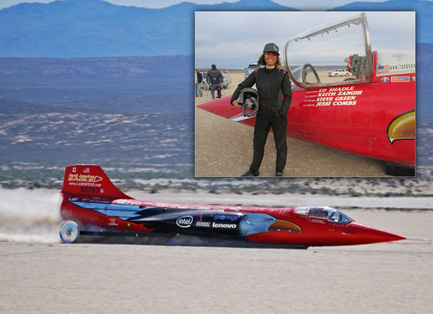
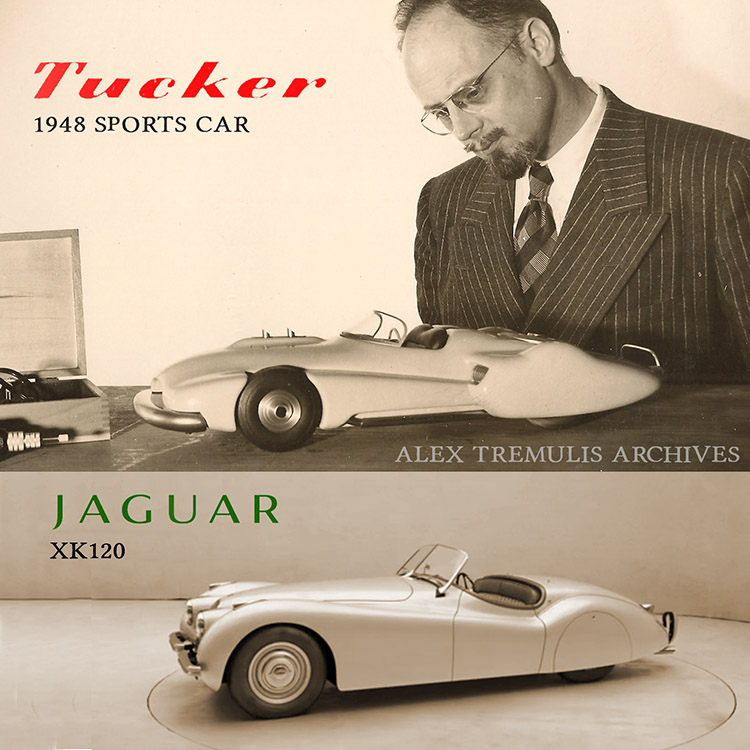
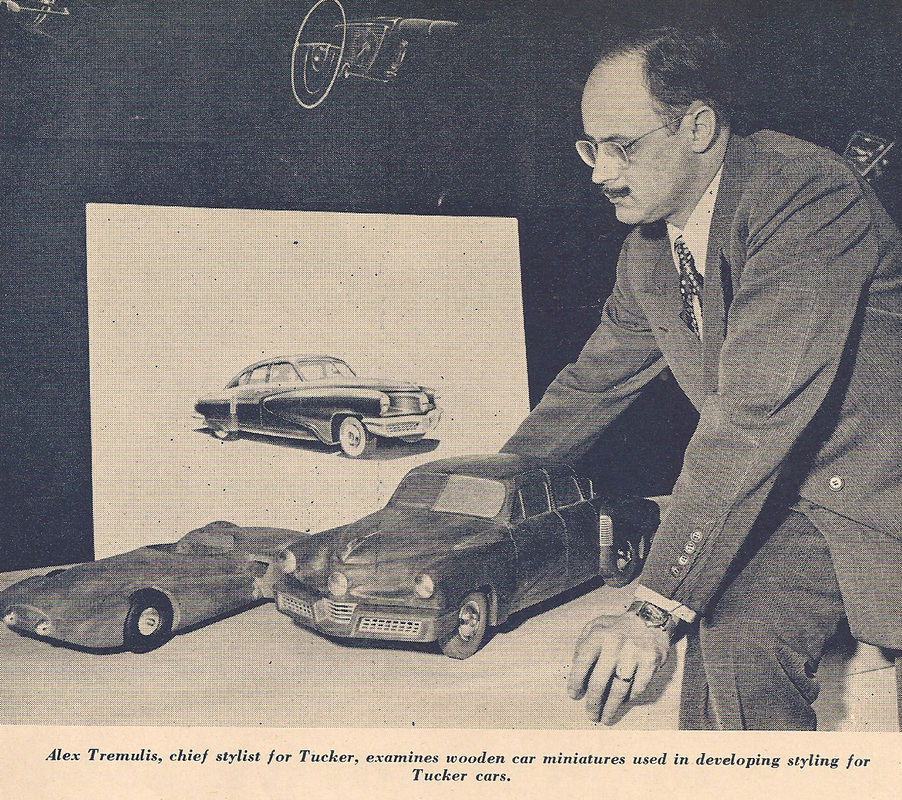
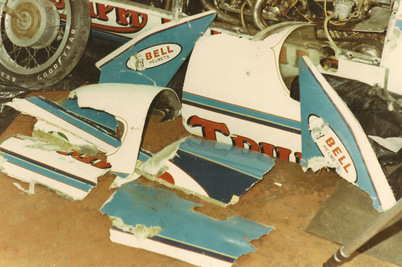
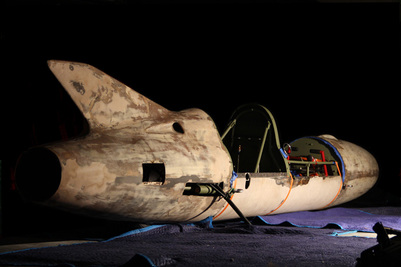
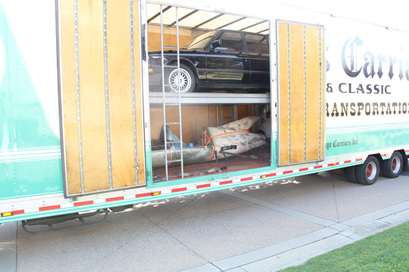
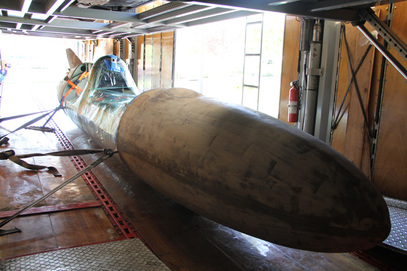
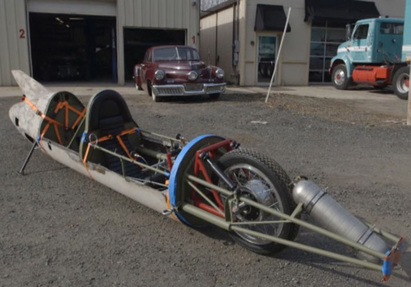
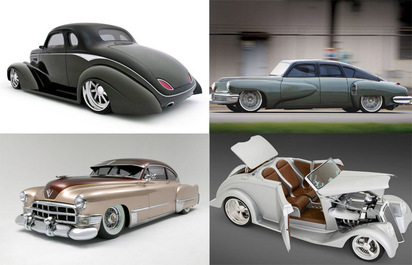
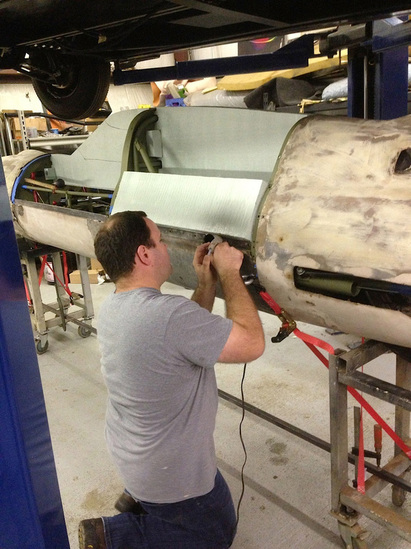
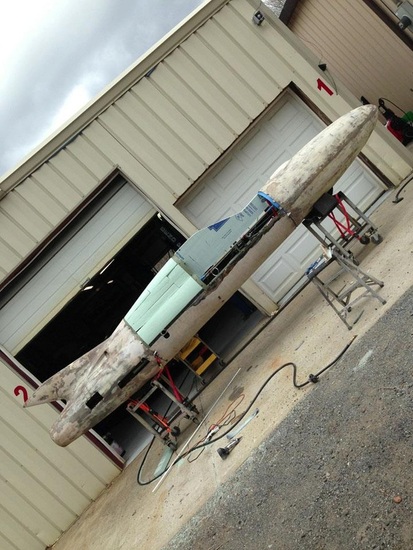
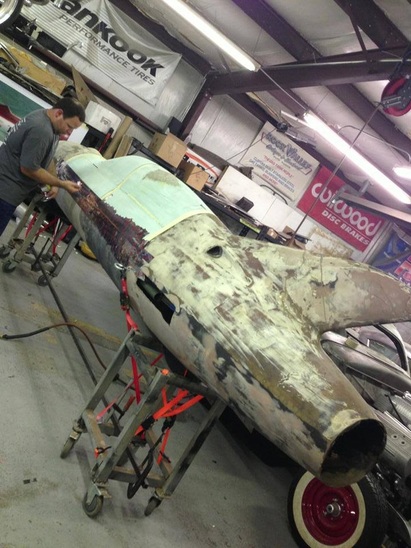
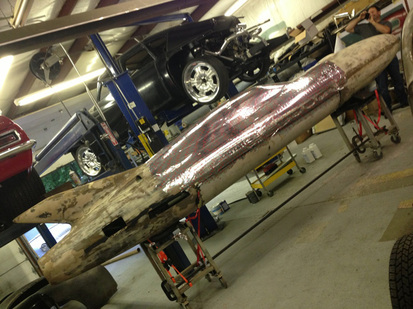
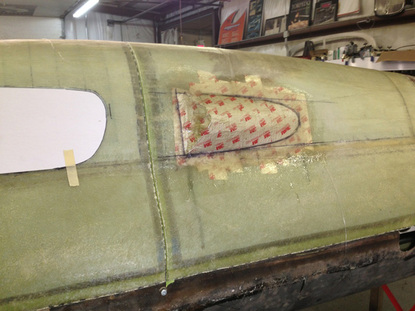
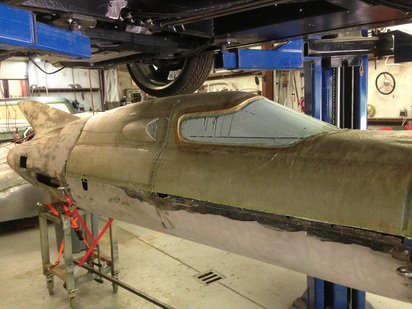
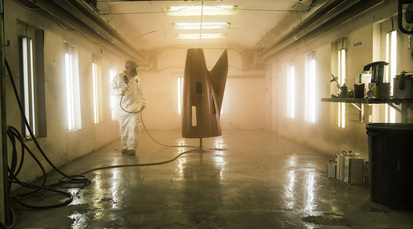
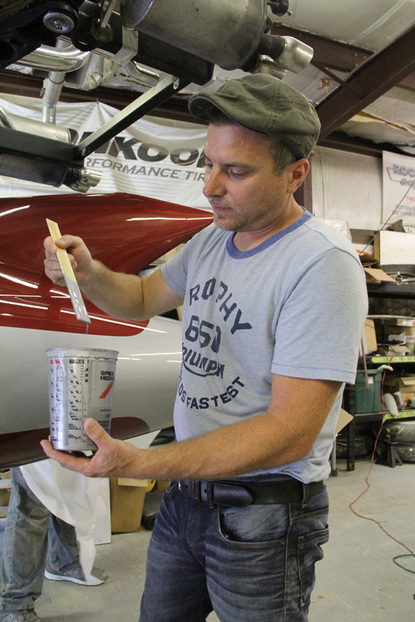
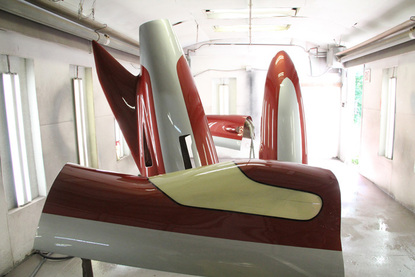
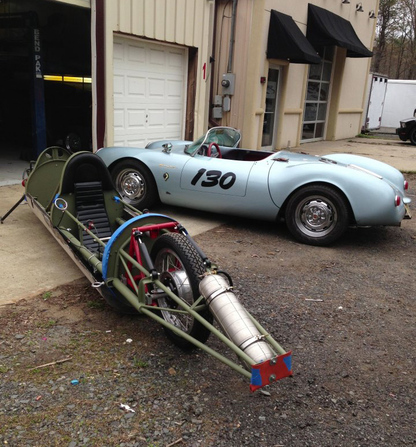
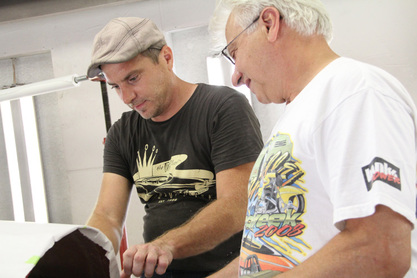
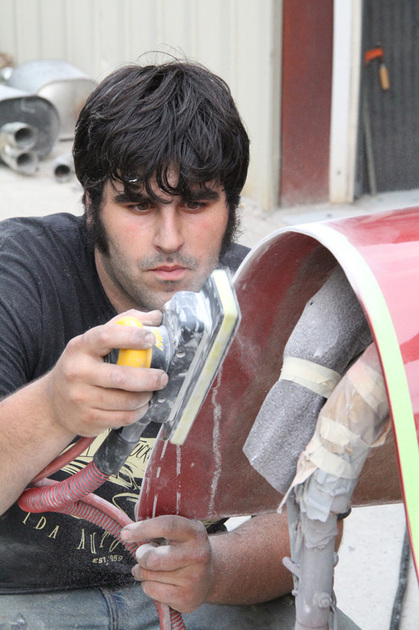
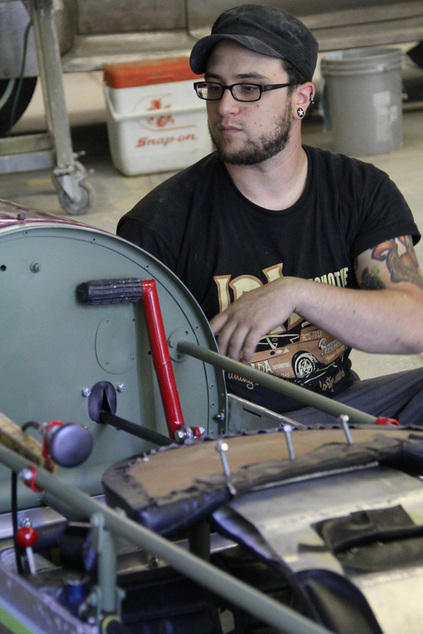
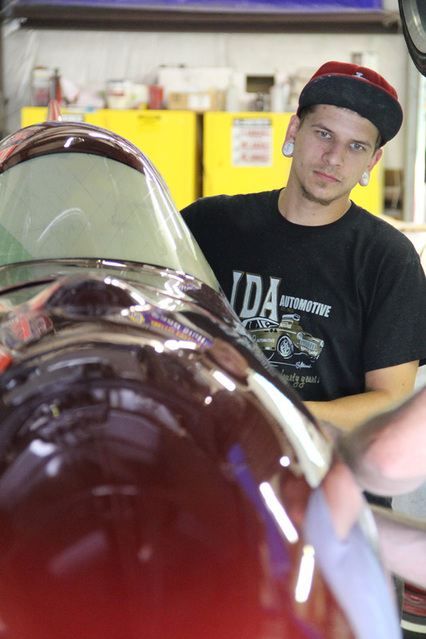
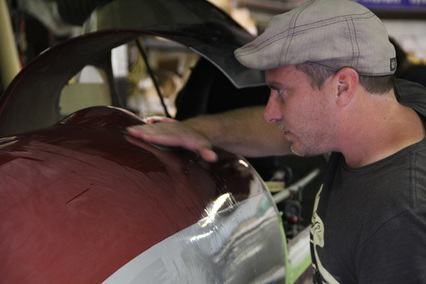
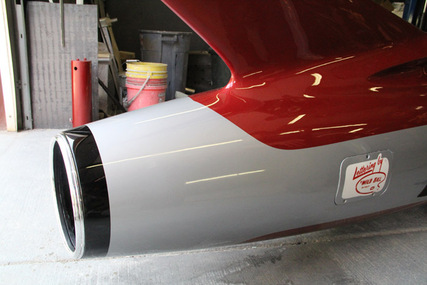
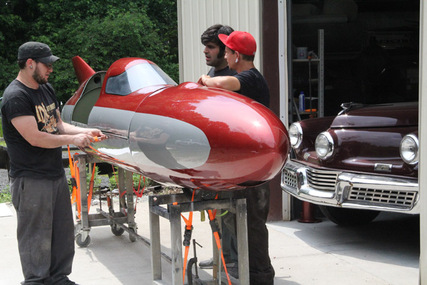
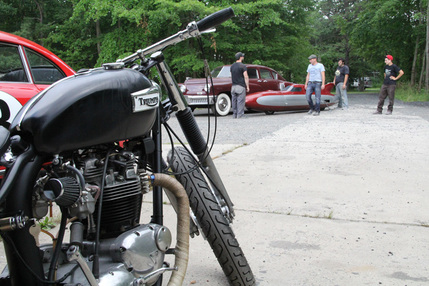
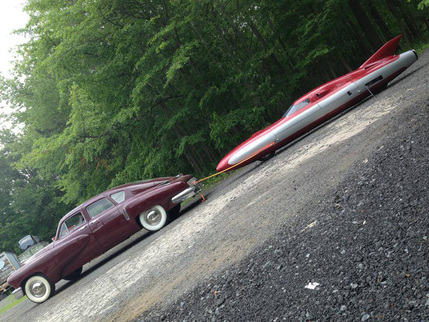
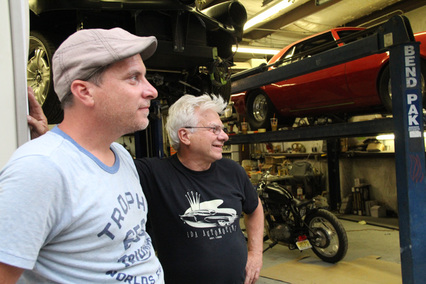
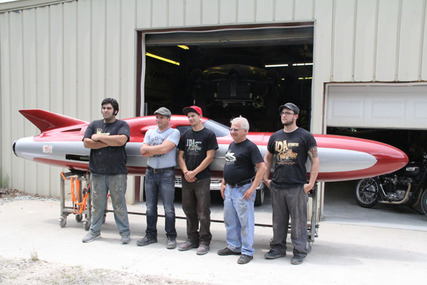
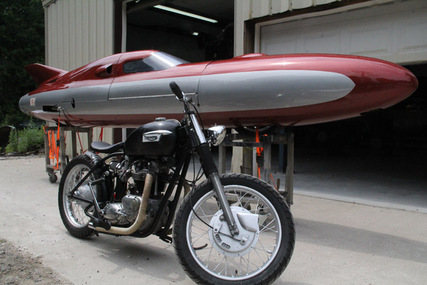
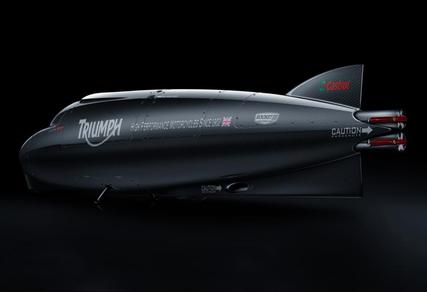
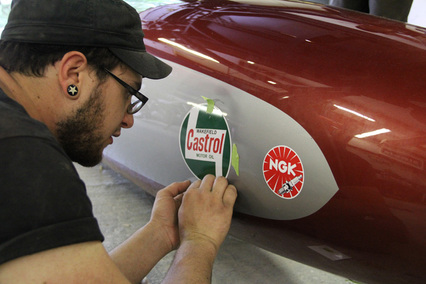
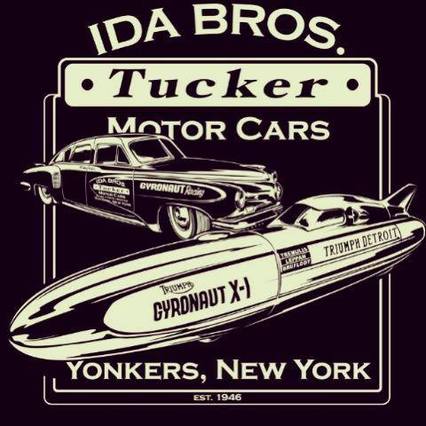
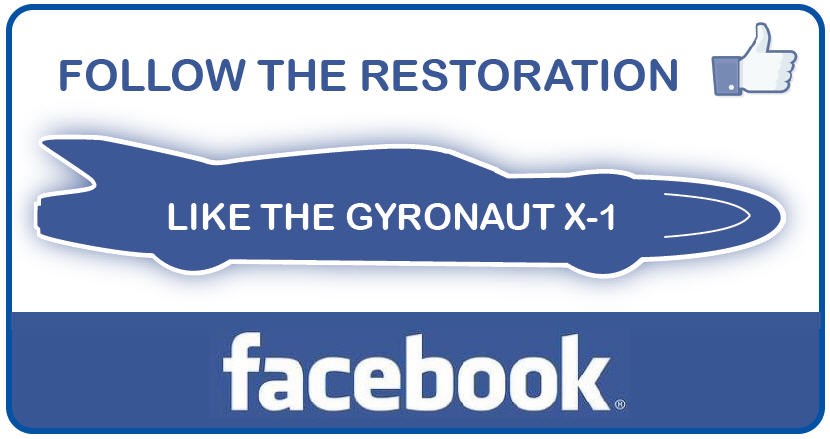
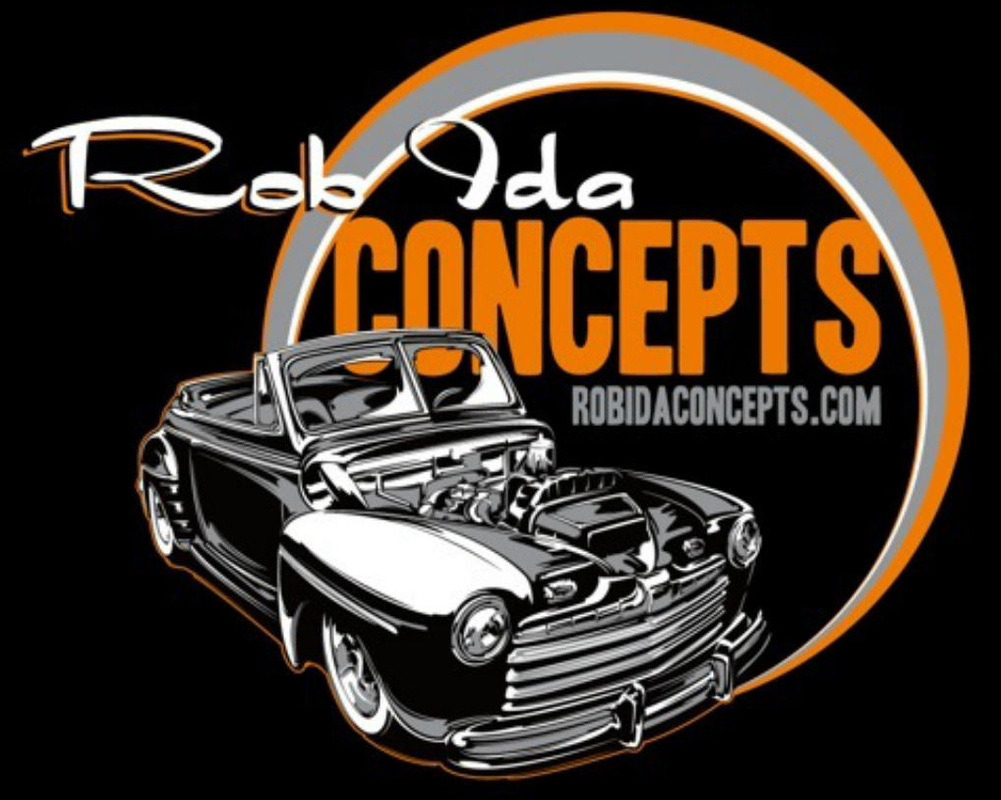
 RSS Feed
RSS Feed
